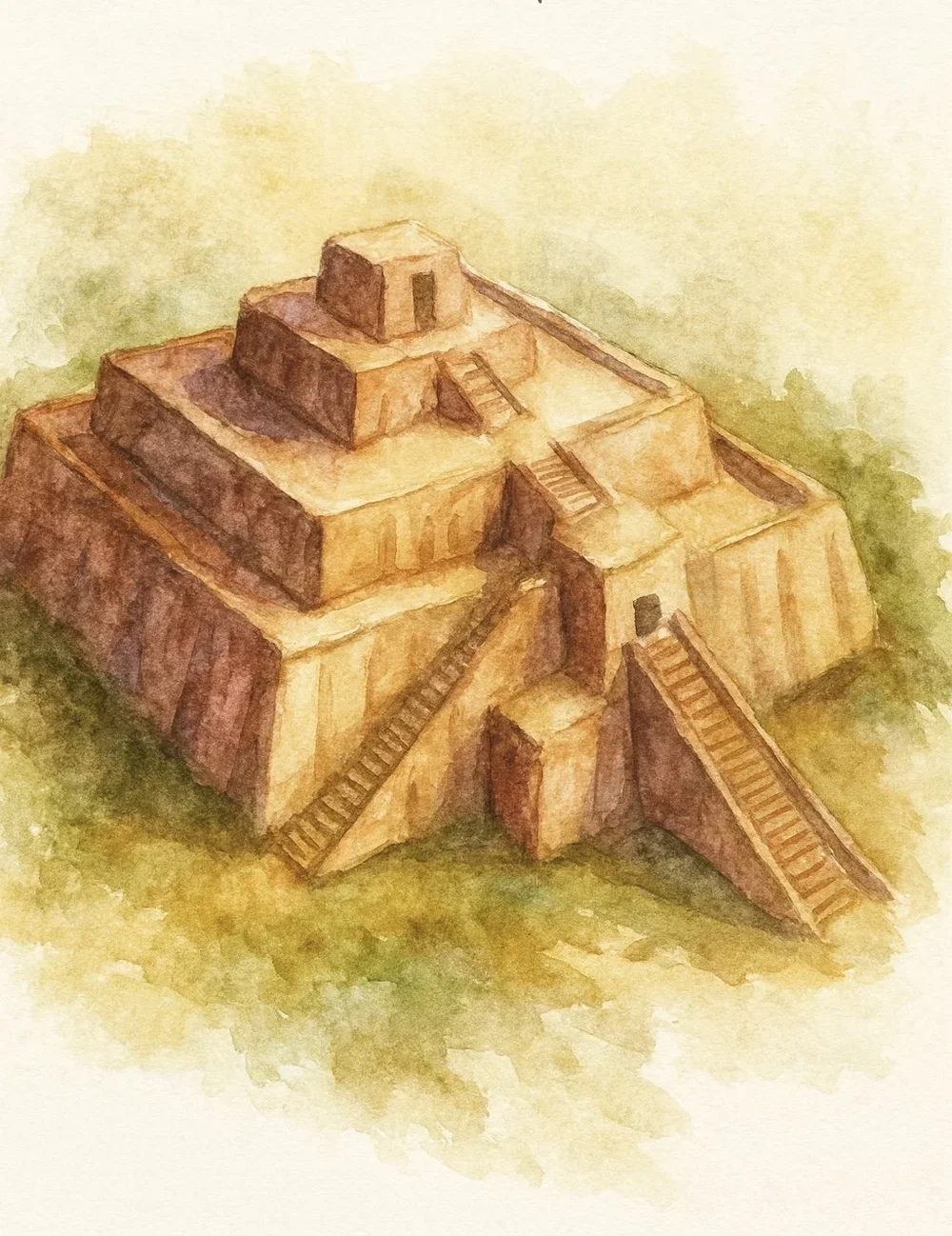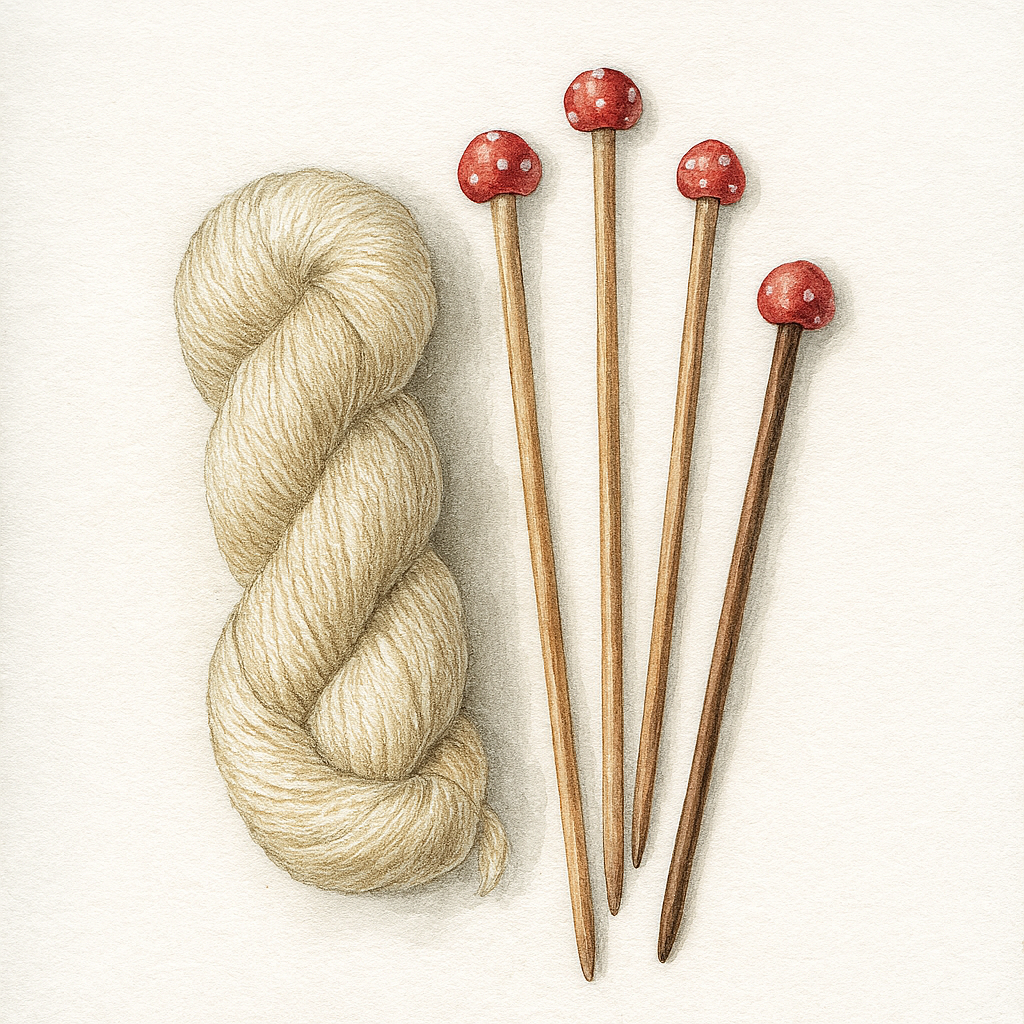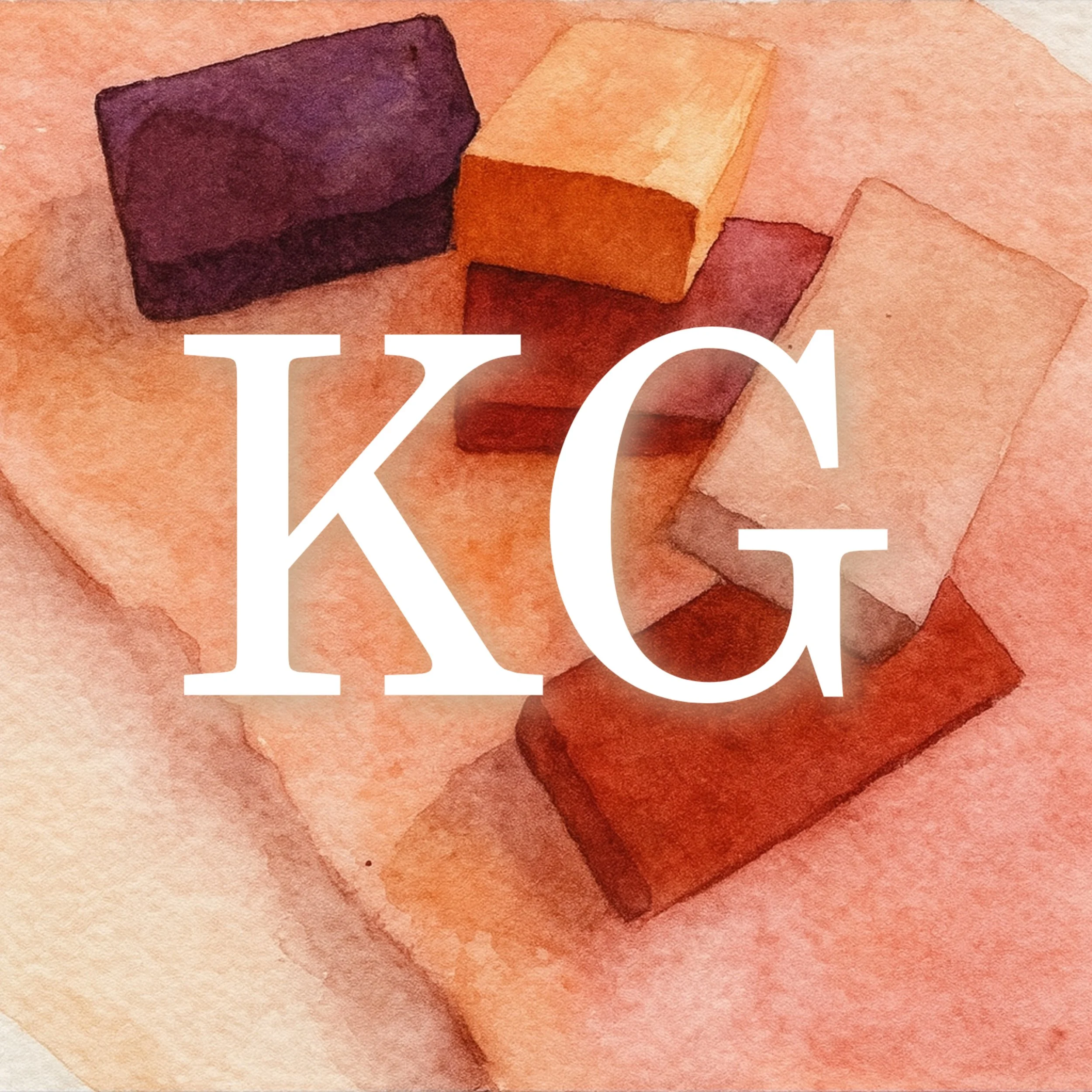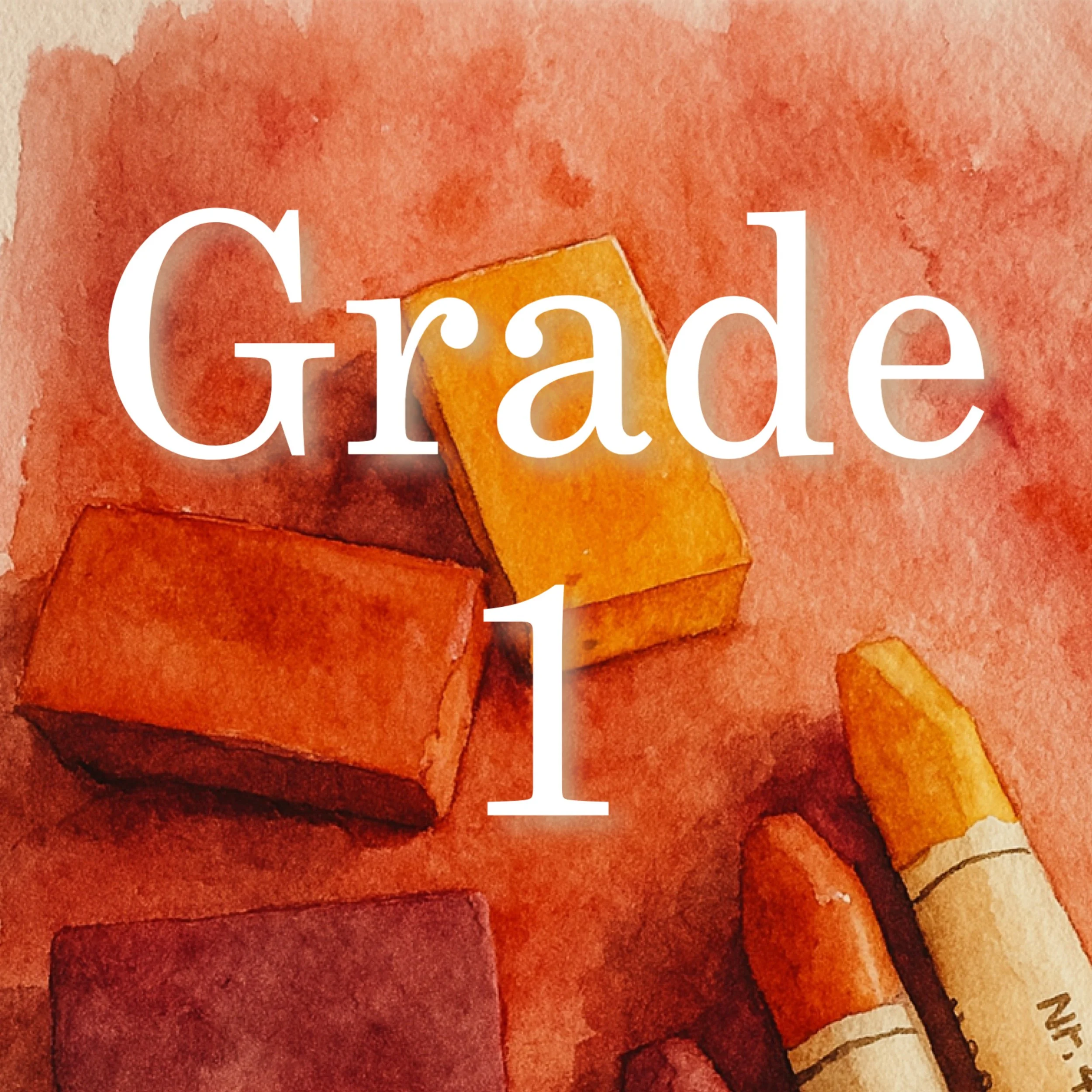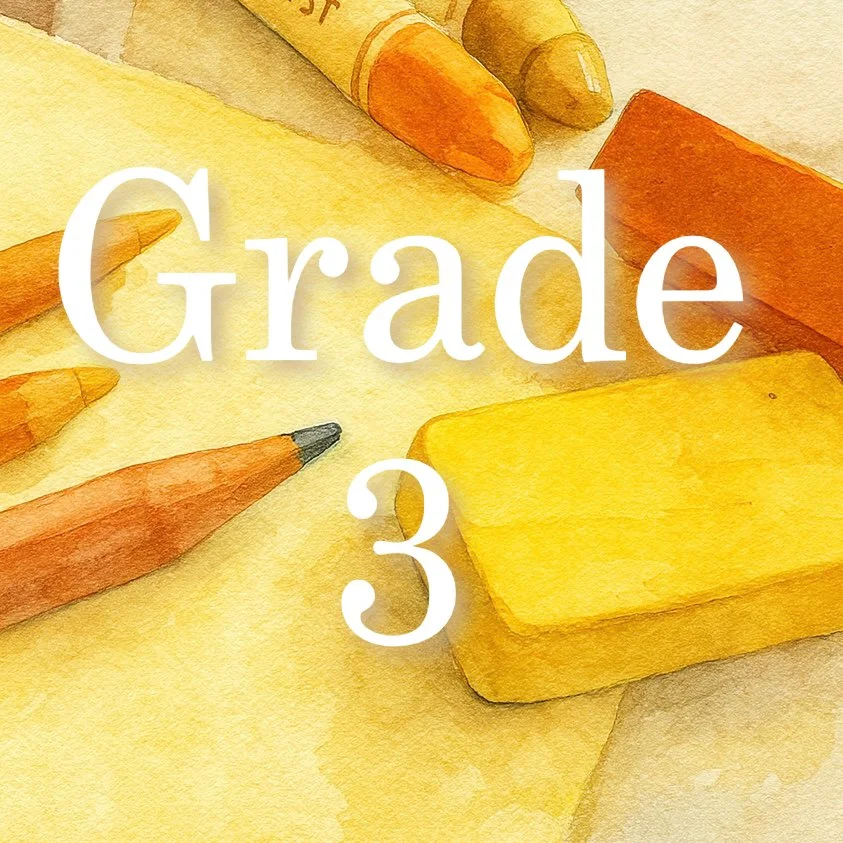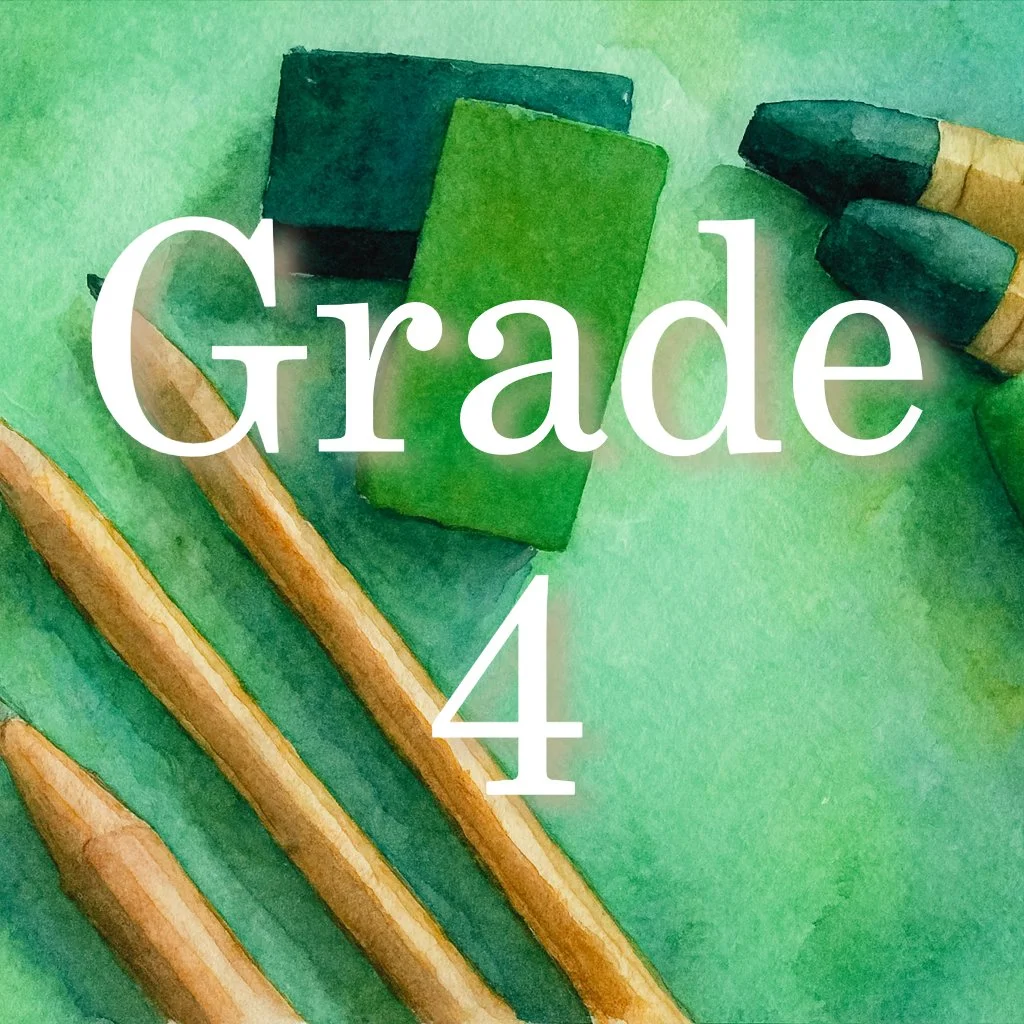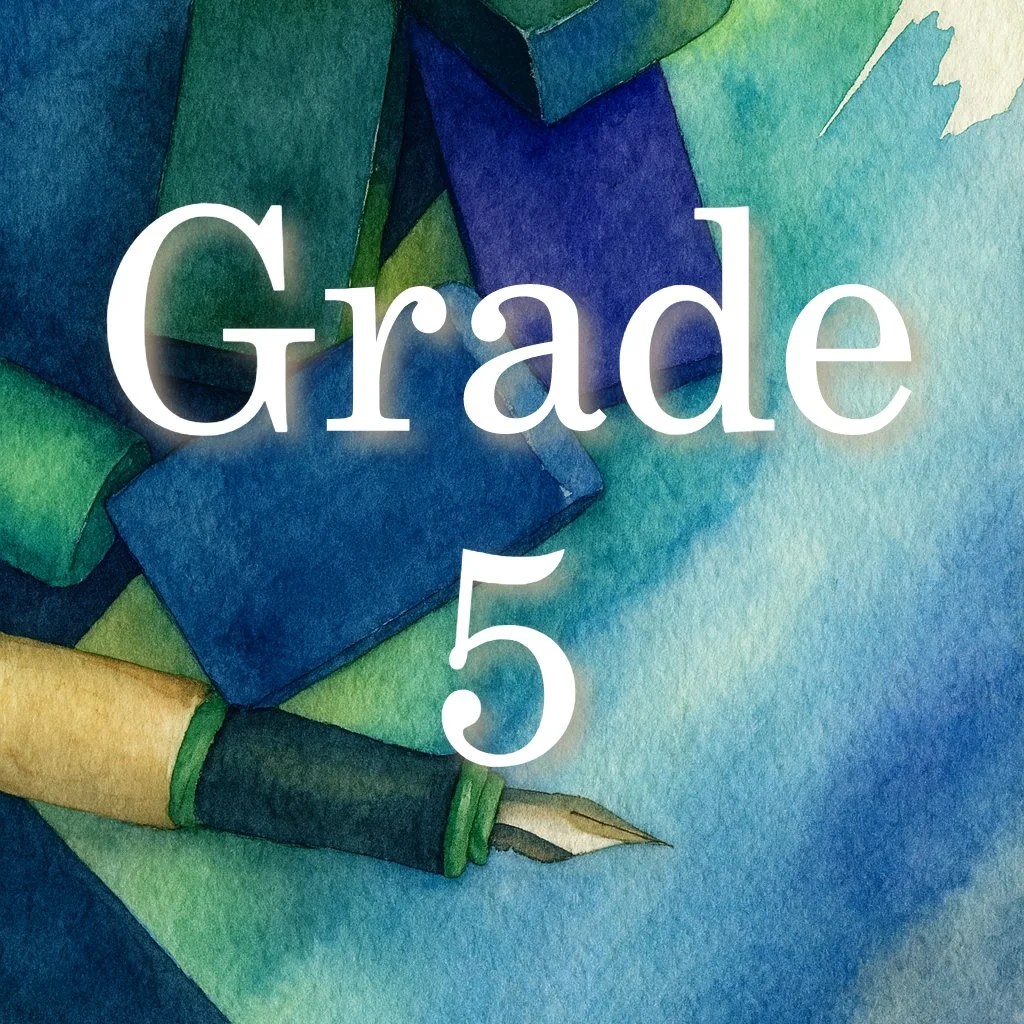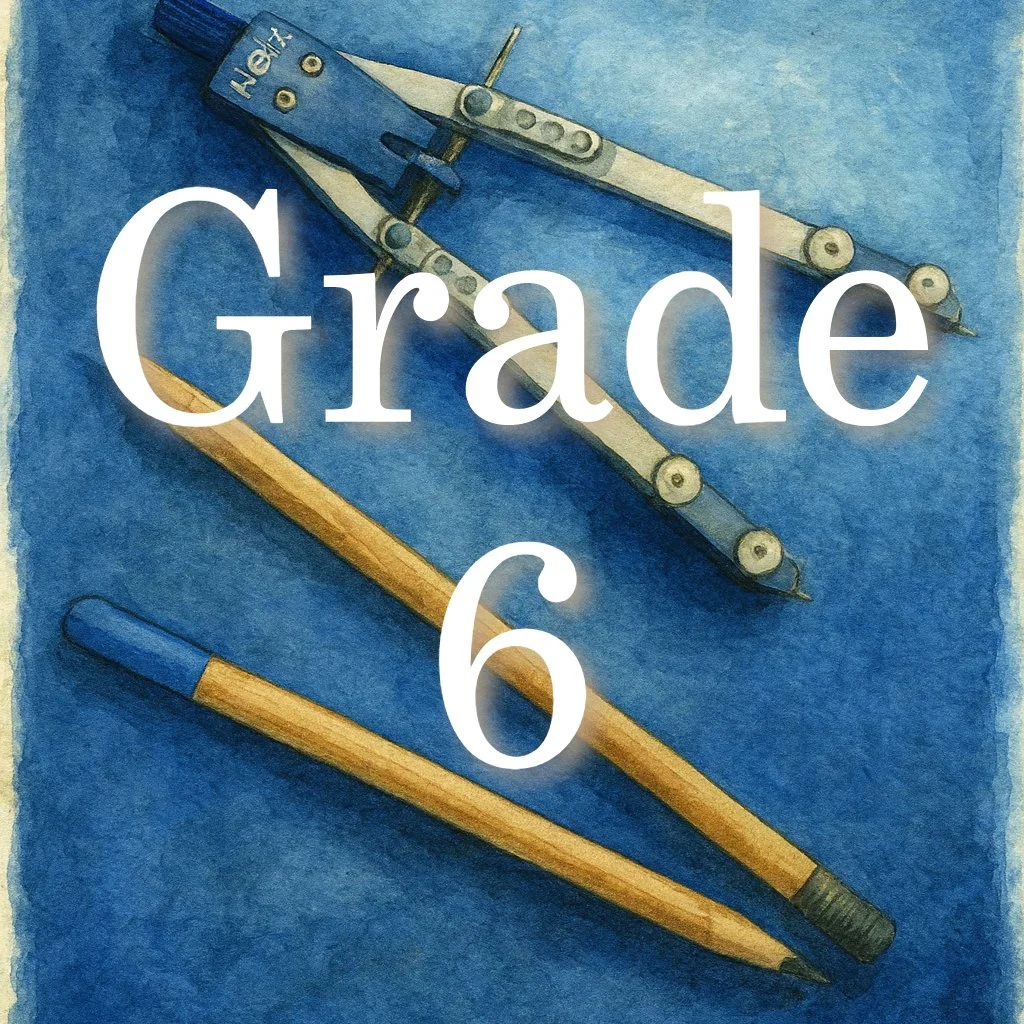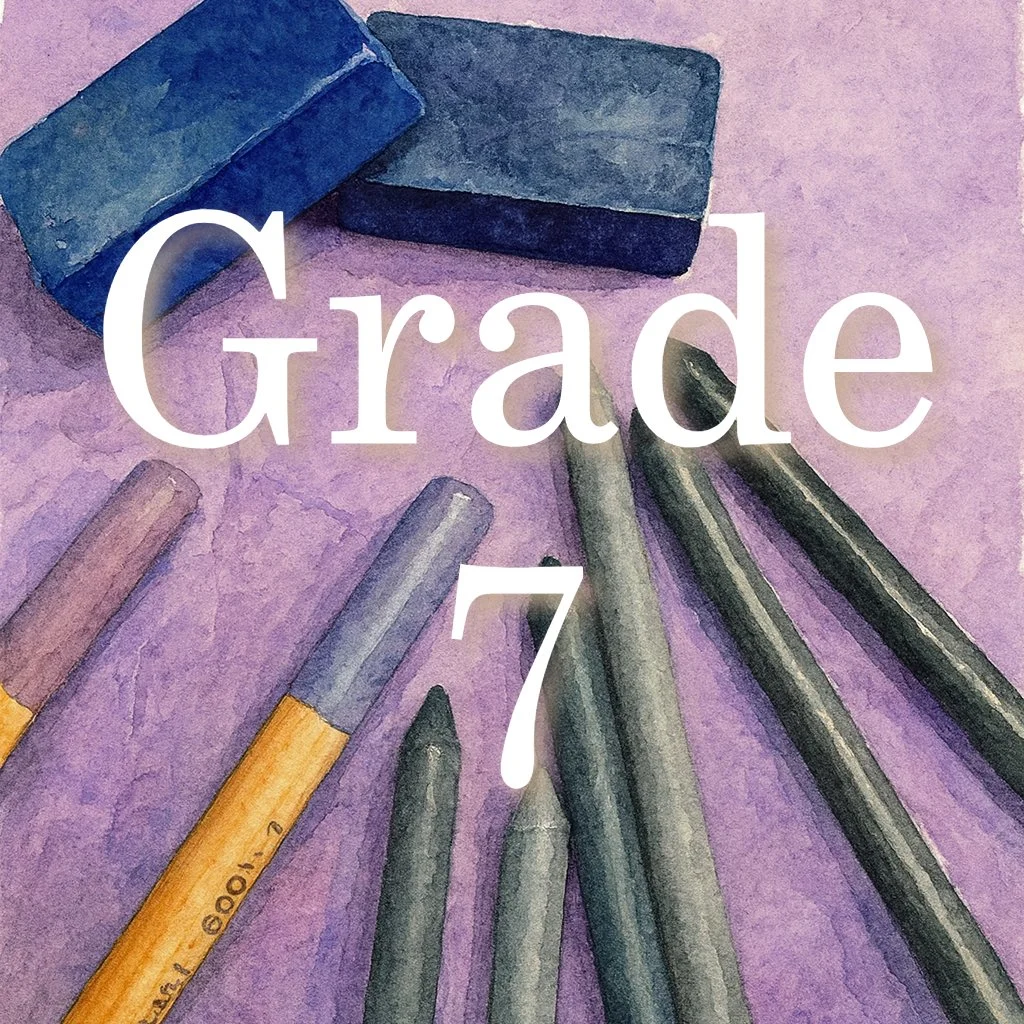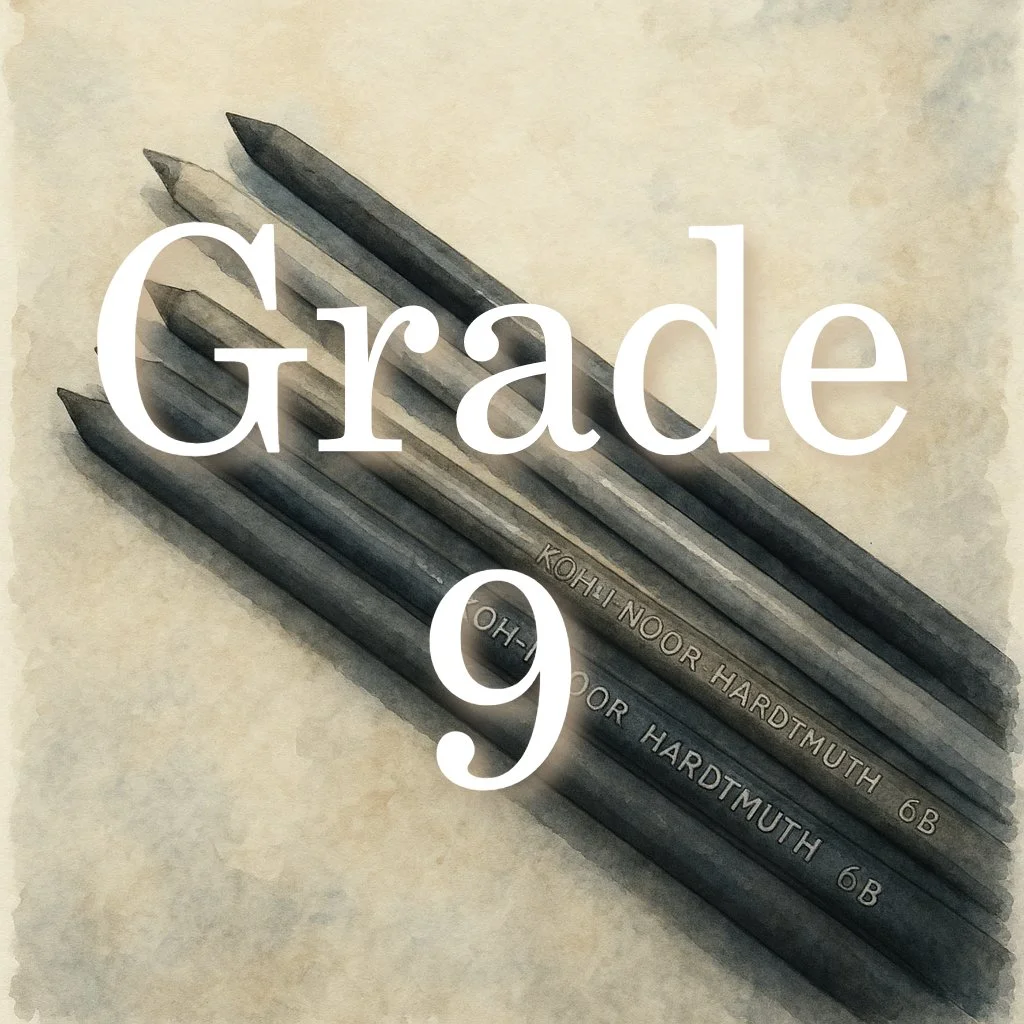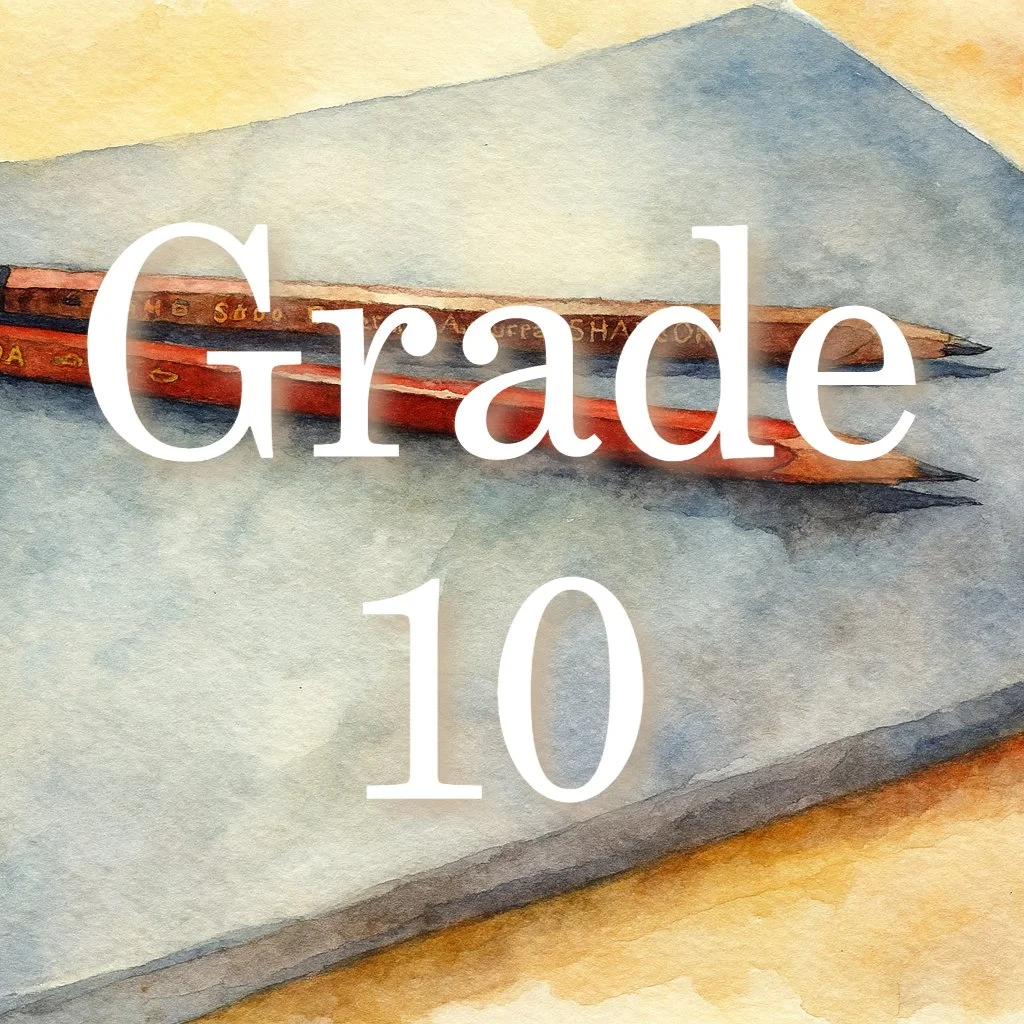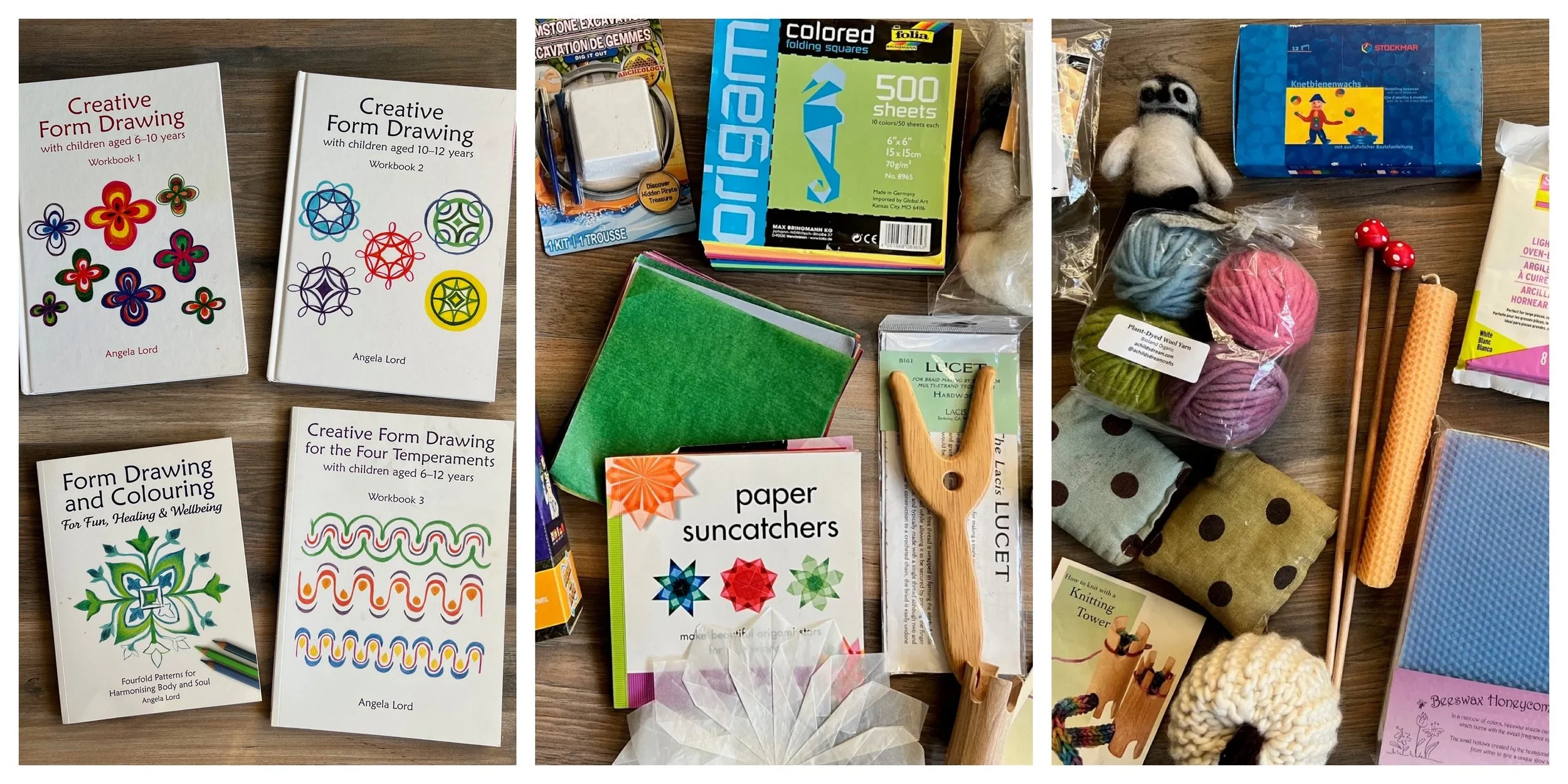
The Main Lesson
Subjects, Main Lessons & Unit Studies
What subjects are with unit studies? What blocks are with main lesson blocks? And what’s the difference between the two? Below is an explanation on how many lesson blocks differ from unit studies. In our homeschool, we have utilized both approaches. As you scroll through the subjects and main lesson blocks, you will see some of them are in line with the Waldorf pedagogy while other ones are in line with my children’s interests. you can jump ahead to each of the subject areas or scroll below to learn more about the difference between main lesson block and unit studies and how each conserve your Homeschool uniquely.
Main Lesson VS. Unit Study
Unit Studies and Main Lesson Blocks are not the same. A main lesson block is typically associated with the Waldorf approach with specific main lesson blocks for each grade. The unit study approach is a more general concept that is represented in a variety of ways. In the younger grades, it may be interest lead, in the older grades it may be something that serves multiple grades and multiple students, and as a curriculum approach, it may serve the family who chooses to use library books as the main resource for their education, or family school with all students partaking in a single lesson specially designed for all students.
What’s the difference between a Main Lesson Block and a Unit Study?
Main lesson blocks in a Waldorf school will be for core subjects, lasting a duration of 3 to 4 weeks. If the block is longer than four weeks, it’s recommended that it is broken up into two blocks, separated by a different main lesson block in between. Sometimes a particular main lesson block is recommended to come before other main lesson blocks like Form Drawing before Quality of Numbers in Grade 1 or Chemistry before Anatomy in Grade 8. There may be other recommendations on where to place the main lesson blocks throughout the year; however, in general, the teacher has tremendous freedom and organizing the main lesson box for the year. Main lesson blocks.
What is block rotation?
Typically I prefer to start the year with math or grammar so that we may spend the year practicing the new skills learned for that year. In talking with other Waldorf teachers, they actually do the opposite. They may hold off on presenting the main lesson for math until the students are older and have become proficient in the math from the previous year. As I tend to introduce subjects a bit later than even the Waldorf curriculum, introducing the math block at the beginning of the year makes sense developmentally for us, whereas for the Waldorf teacher in a school where children may be a little bit younger, it also makes sense developmentally to introduce that main lesson block at the close of the year.
Main lesson blocks rotate throughout the year, whereas daily lessons occurred daily or biweekly. For instance, foreign language, is a subject that is daily in Waldorf schools or twice a week. Same with music instruction, handwork and eurythmy. These lessons tend to be shorter last 45 to 60 minutes whereas the main lesson is first thing in the morning with a 2-hour block of time.
The Main Lesson
The main lesson is about two hours long and includes opening activities, review of the previous lesson, main lesson work, which includes illustration, narration, and or an activity, with the conclusion being the new lesson of the day. A main lesson and main lesson block approach are unique to Waldorf education; however, the concept can be applied to a unit study or traditional curriculum.
A main lesson block is a focused period of time in which one subject area is explored in depth. Every day, the same subject is taught for the duration of the main lesson block. Once the main lesson block is over, that subject is not revisited unless the block itself has been broken up into two main lesson blocks. Of course yearly there will be a math main lesson block, but the content of the block will develop over the years.
When doing a main lesson block there isn’t an effort made to include other subject areas into that main lesson block as you might notice with the unit study approach. For instance, if it is a history block on the Middle Ages, an effort to include science, reading, and math are not specifically intertwined into the lesson unless it occurs naturally. However, the main lesson blocks do relate to one another and create cohesion within the year and within the context of the previous and following year.
Reading and writing are part of nearly every main lesson and main lesson block. The students write original narrations, which includes their writing, and their reading, as they proofread their written work and make corrections. Copywork and dictation are common in the younger years, but by 4th grade copywork and dictation has tapered off. Naturally reading, writing, spelling, and grammar are practiced daily, but grammar does not begin until Grade 3 after the Nine-Year-Change.
Often times with a history block, geography is naturally going to be included. So, there is a natural inclusion of other subject areas within the main lesson block, but the main lesson block is not constructed specifically to include other new learning and other subject areas. Main main lesson blocks coordinate with one another each year so that there is cohesion throughout the year. daily work in math and grammar occur outside of the main lesson block, yet there are times when a specific math main lesson block or language arts main lesson block is included. Personally, I like to include our math and grammar main lesson blocks at the start of the year, so we have the remainder of the year to practice the new concepts and become proficient in them. In other cases, I’ve heard of teachers who do the new math learning at the end of the year when they feel their students have matured enough to understand those concepts. I think this is a great approach, especially in the classroom studying where students might be a little bit younger when they receive those students for that grade level versus when I’m teaching those same grades to my students. Since I tend to start approximately a year behind traditional and conventional schooling, my students tend to be older for their grade level, making it easier for them to comprehend and master concepts.
The Unit Study Approach
The unit study approach can be applied to any existing curriculum, which makes it a versatile way of teaching. Suppose you are working with your science curriculum, and you come upon a particular subject area that you want to spend more time on. Applying the unit study approach in that case means that you can depart from your existing curriculum for a period of time and dive into that particular subject area. The freedom to include other subject areas into your unit study can enrich the experience for you and your students. With a little bit of forethought you can include other subject areas, including math and language arts into your unit study for holistic organic learning. Unit studies can be the standalone curriculum in some cases. You can take the subjects that you want to cover in the year and trim them into unit studies where you spend a concentrated period of time diving into that particular subject area. The kind of work you show for your unit study can vary from student to student and family to family, making the unit study approach customizable.
Another added benefit to the unit study approach is that it serves the homeschooling family exceptionally well. Through the unit study approach you can teach multiple children of multiple ages or grades or abilities easily within one unit. By way of using an assortment of resources and expecting ability-appropriate work from each student means that one lesson can be delivered to all of your students whereas the work they produce reflects their capabilities and comprehension. A balance between main lesson blocks and unit studies can work very well for the homeschooling family. In practice it may look like this: a specific main lesson block for your grade one student who is just entering formal education with special blocks dedicated to reading, writing and math, followed by a unit study approach in history or science to meet the needs of all of your students at once. We practiced this often in our homeschool with some students getting a specific grade appropriate main lessons balanced by a unit study approach that could serve all of my students.
Another benefit of the unit study approach is the ability to use current resources, Living books, library books, or any other media to present the lessons. Rather than being locked in with a particular curriculum, unit study approach allows you to have more freedom in the resources to put together your lessons.
Subjects
The Waldorf Main Lesson & Main Lesson Block
-
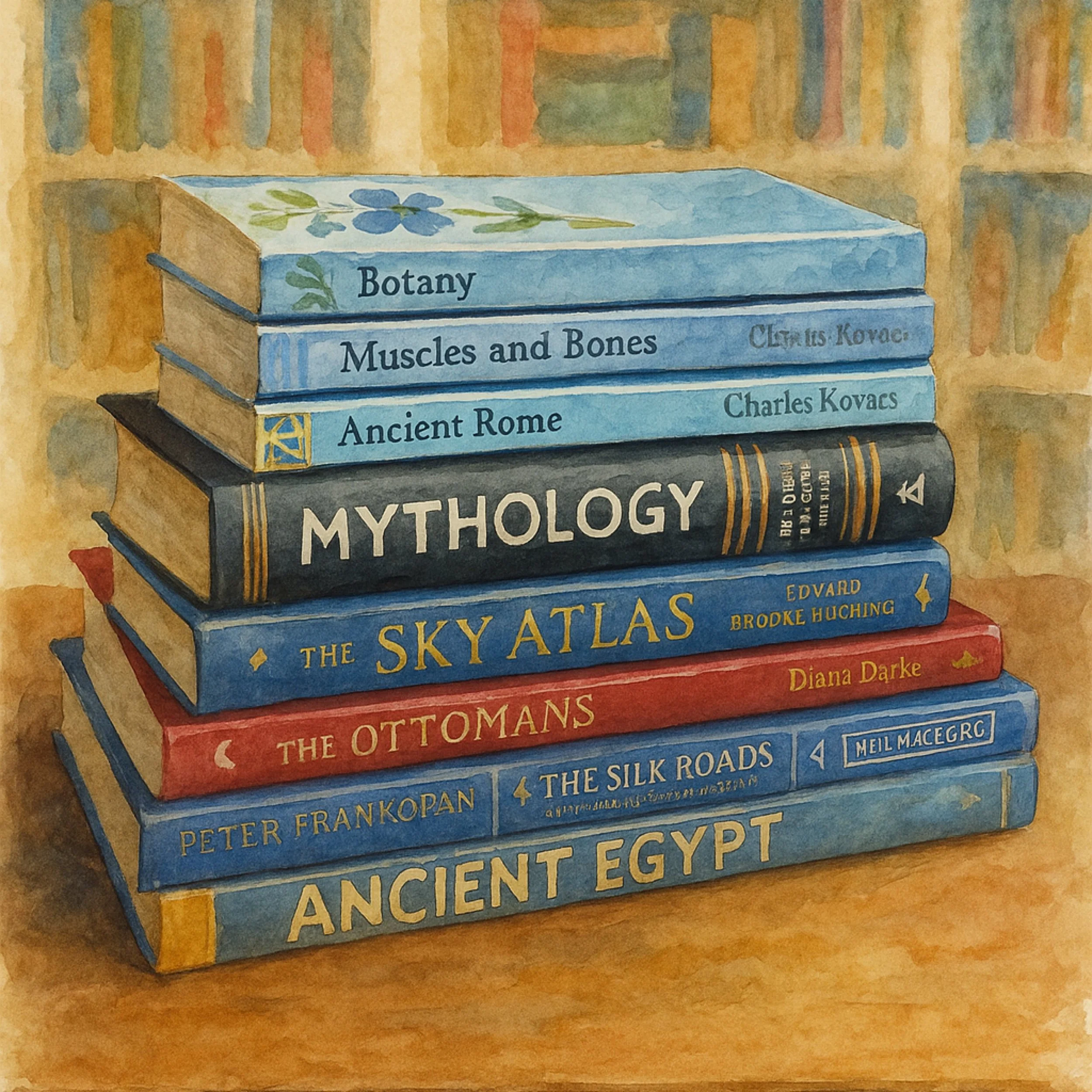
The Main Lesson Block
A Main Lesson Block is unique to the Waldorf pedagogy. Blocks rotate throughout the year, lasting about 3-4 weeks. During a block, a single subject is explored in depth.
-
The Main Lesson
What is a Main Lesson and how does it differ from other lessons? A Main Lesson is unique to the Waldorf pedagogy and follows a three day cycle unlike other methods of lesson delivery.
-
Opening Activities
Opening Activities are the first lessons of a main lesson. Playing games, doing mental math or practicing tongue twisters are some activities that help the students engage in preparation of the main lesson.
-
Daily Work
Daily work is necessary though separate from the work of a main lesson. Lessons in grammar and math are typical daily work practice that students perform daily to become proficient in practical skills.
The Main Lesson Block
-

Waldorf Subjects that are Not Main Lesson Blocks
There are many subjects that round out the Waldorf curriculum. We often talk about the main lesson blocks and focus on them for our homeschool, but there are many other subjects that a Waldorf school offers that are often overlooked in a homeschool setting.
-

What is a Main Lesson Block
The Waldorf Main Lesson block is a block of time in which a subject is focused on. Generally the blocks last 3-6 weeks, but longer blocks are advised to break into two or three smaller blocks and separated by other blocks.
The Main Lesson
-
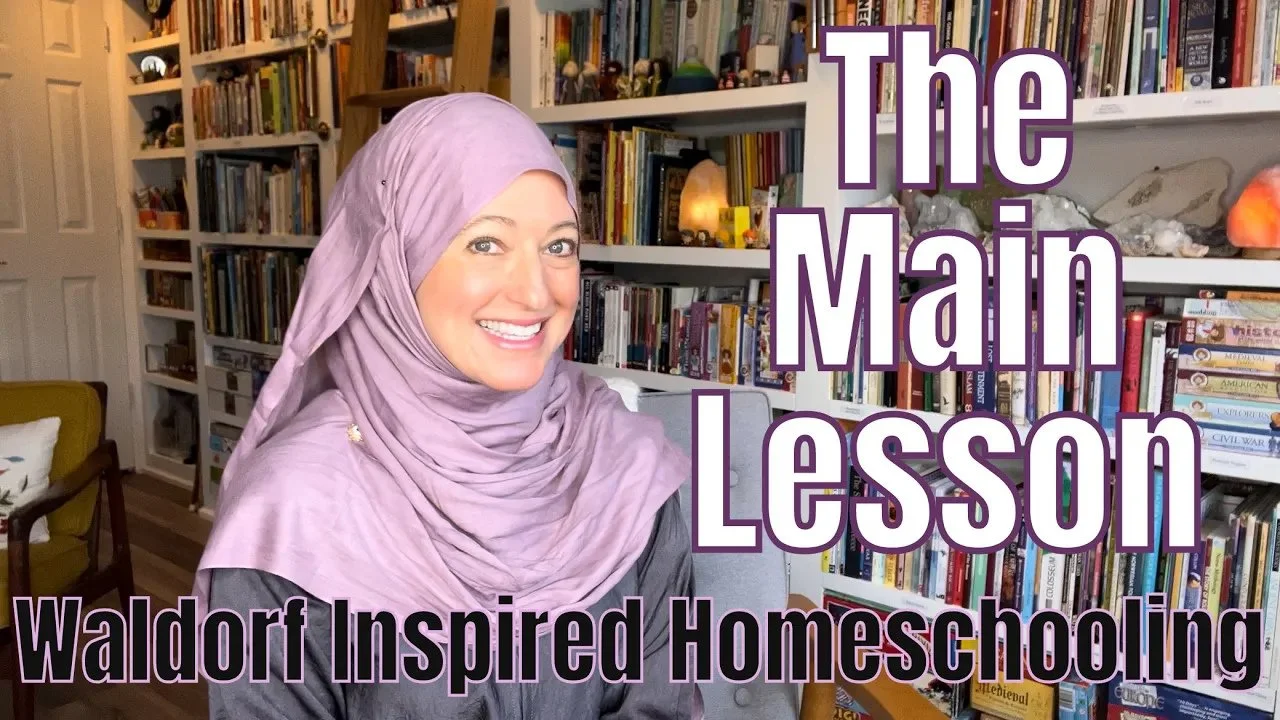
What is a Waldorf Main Lesson?
The Main Lesson is the educational focus of the day. It tends to be the first lesson in Waldorf schools and is recommended to be the first lesson in a homeschool environment.
-

What is the Format of a Waldorf Main Lesson?
Answering your homeschool questions: what is the format of a Waldorf Main lesson? Sharing my experience with the application of Waldorf main lessons in our homeschool.
-

What Are Waldorf Main Lesson Books?
Main Lesson book are the main notebooks used in Waldorf schools and Waldorf homeschools. They are typically 8"x10" with lined and blank pages for students in 5th grade and up and blank notebooks 9"x12" (and larger) for students in 1st-3rd grade.
-
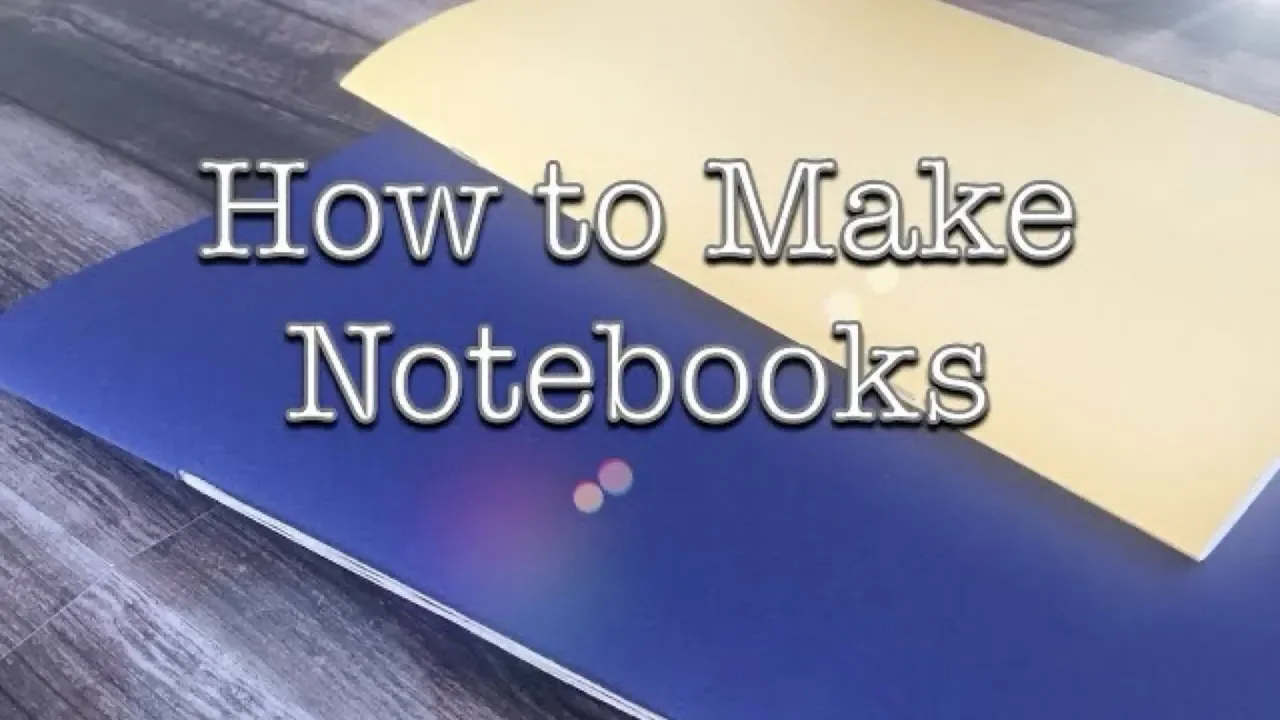
How to Make a Main Lesson Book
This tutorial will show you how to make main lesson books or notebooks three different ways. You can buy main lesson books from Waldorf Supplies (Paper Scissor Stone).
-
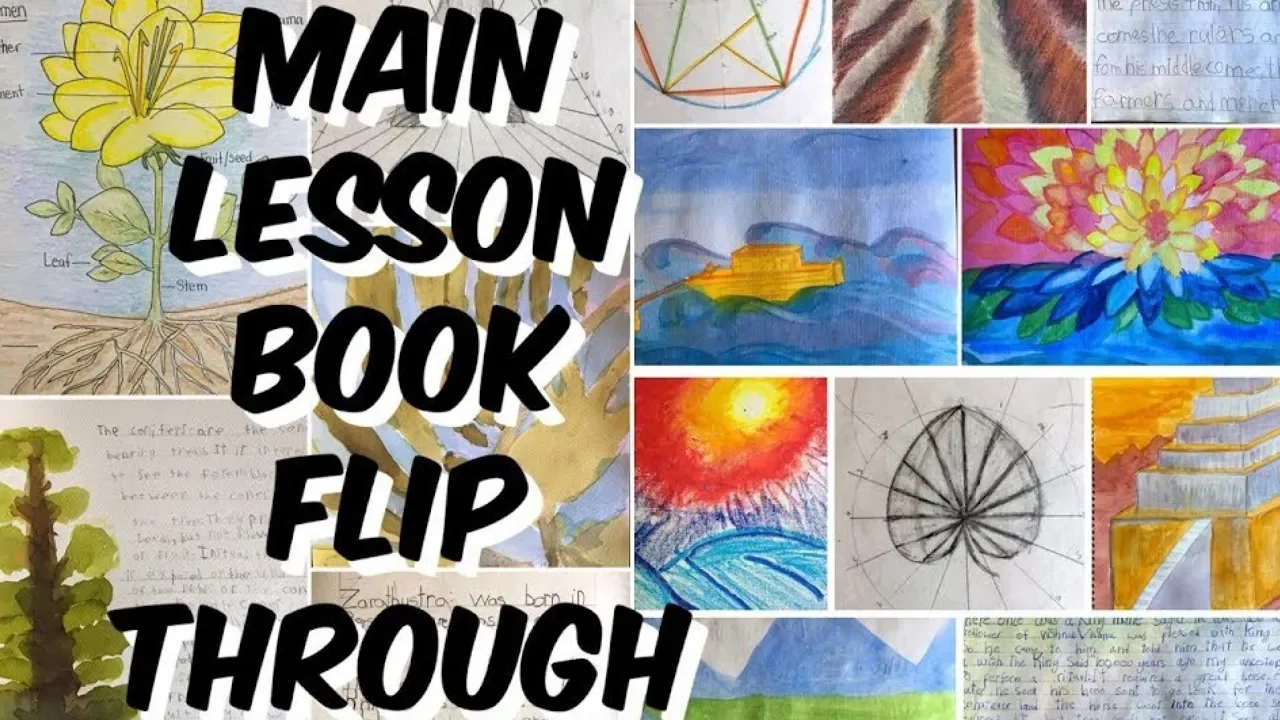
What Are Main Lesson Books ?
The Waldorf curriculum we use doesn't have a teaching manual and textbooks. There are no workbooks. We might not even see regular subjects as you'd expect in other traditional methods and the scope and sequence may be new to you. So what do you get when you order a Waldorf curriculum and what will your children do?
Opening Activities
-

What Are Opening Activities
Opening activities are short varied activities you may do to start your homeschooling day. You may include things like playing a board game, practicing a musical instrument, doing some mental math, or reading a picture book.
-

Activities for Kinesthetic Learners
If you have kinesthetic learners, you may find that working with clay, wax or putty keeps them engaged longer as you deliver a lesson. Creative project driven students may become engrossed by origami or suncatchers.
-

How to Use Picture Books Opening Activities
Transition activities suitable for small or large groups may differ from those especially suitable for small groups or individual students. Sometimes simply reading aloud is enough to draw students to you.
-
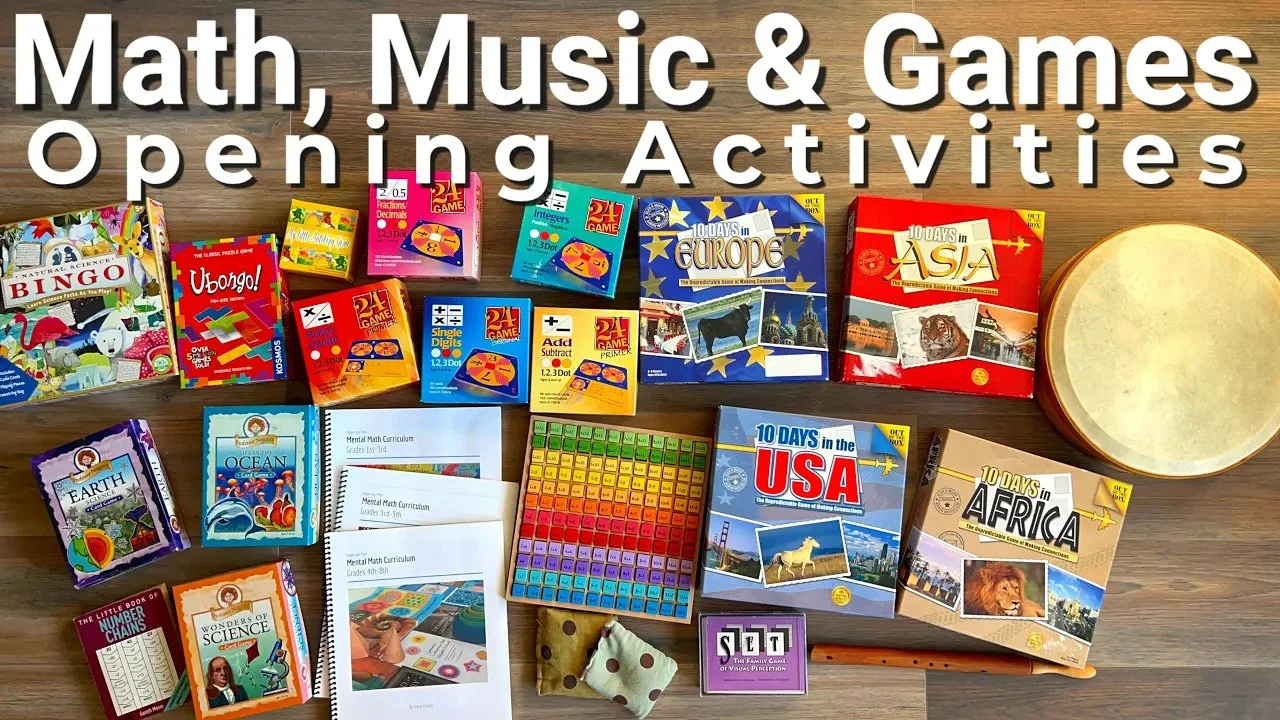
Opening Activities | Math, Music and Games
Mental math, Mad Libs and pictures books are by far our most used opening activities. We do mental math daily, but that's not an activity that's going to to draw your students away from their engaging activities unless you have a student who loves math very much!
-
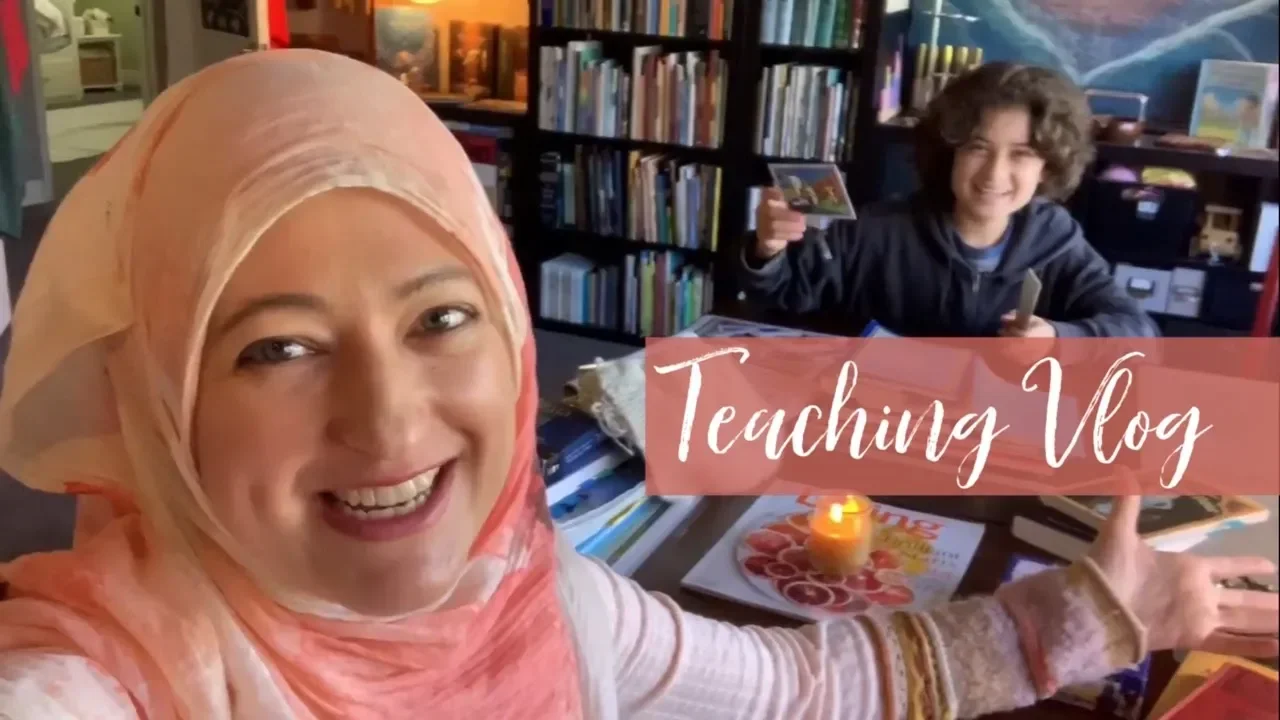
How We Do Our Homeschool Opening Activities
Sometimes our opening activities occur in the morning, but more often than not, they happen anytime throughout the day. And while I do wish we had more routine to our schedule, it is a good rhythm that has worked for us for several years now.
Daily Work
-
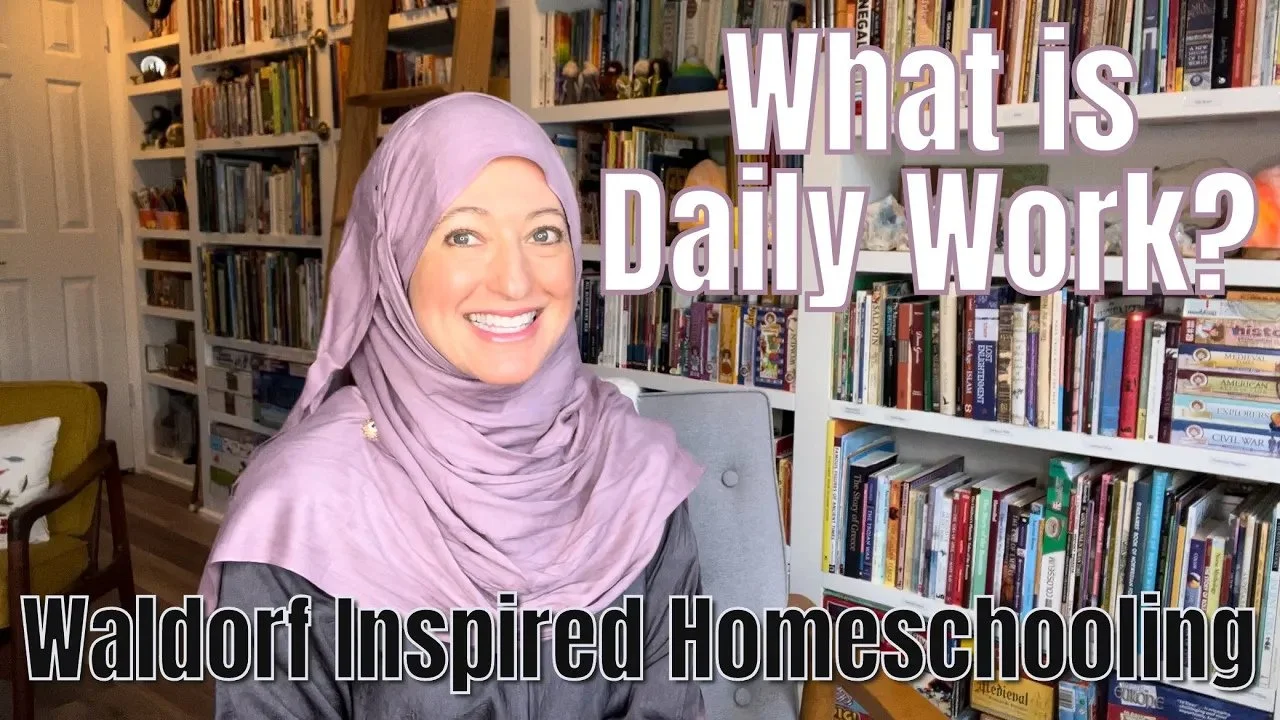
What is Daily Work?
Daily work is the independent work I assign to my students to work quietly and without needing assistance. I usually have my students work on this when I need time to prepare other lessons or work with another student. I start daily work packets or binders around age 9 or 10 years.
-
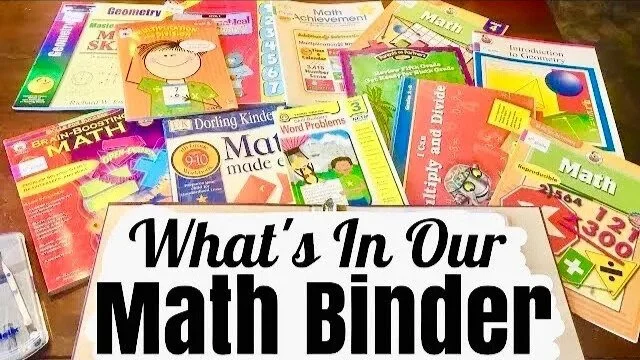
Daily Math Binder
Creating a math binder is an easy way to take the best worksheets from a variety of workbooks. I take worksheets that are about 1-3 grade levels below with the intention that this daily math shouldn't take more than 10 minutes, should be easy, and cover basic math.
-

Mental Math
Mental Math are math questions that can be worked out in one's head. Often, they are two part questions which involve a multiplication or division question first, followed by an addition or subtraction question next. When you add in fractions, decimals and percents, you can easily see how complex the questions can become.
-

Mental Math Curriculum
Mental math is the process of orally asking math questions and having the student compute the math in his or her head and orally answer the question. These are not questions that are drilled or memorized. Often you’ll find two part questions that can still be done mentally but are more challenging because now the whole question needs to be remembered while each portion of the question is worked out.
-

How To Organize Daily Work
When our homeschool became stale recently, I needed to liven up our daily work with a new system. In came the file folder system. A system by which daily work is contained within file folders, neatly arranged and labeled for clarity and ease. I've modified this brilliant system (no doubt stolen from the workforce), to include a trimmed down envelope in the back to hold completed work.
-
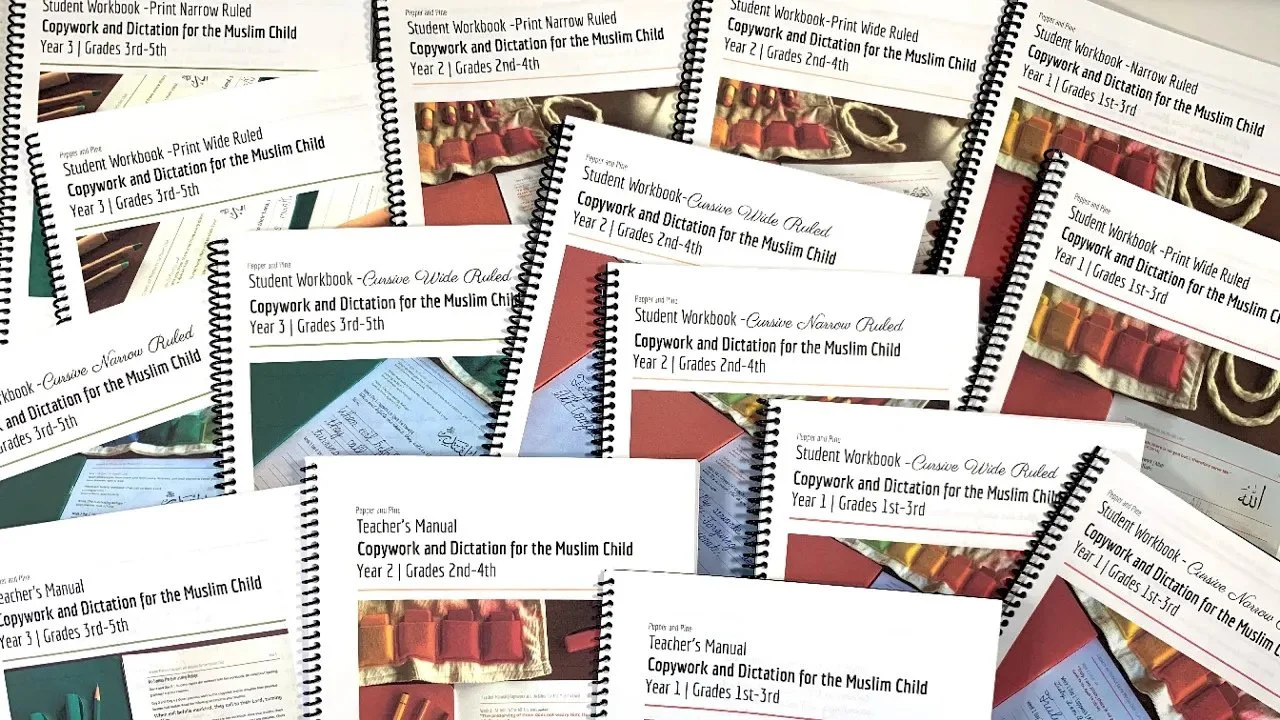
Copywork and Dictation
Copywork and dictation is a means for children to gain writing proficiency. By copying full well constructed sentences, the student learns whole language rather than isolated rules of grammar and spelling.
-

How We Do Copywork and Dictation
Each week a name of Allah will be focused for the duration of the week. On Day 1 of the week, the new sentence is presented and the student copies the sentence in the workbook.
-
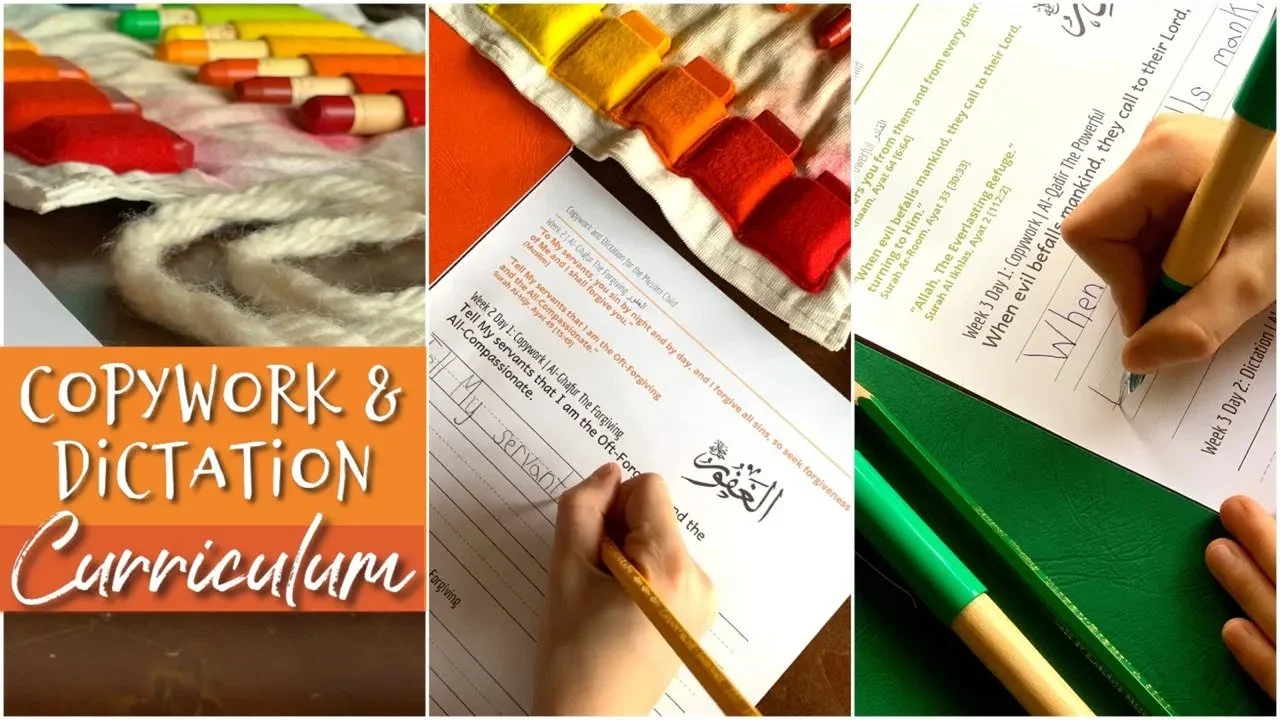
Copywork and Dictation Curriculum
Copywork and Dictation for the Muslim child is a curriculum using ayat which mention the 99 names Allah as content for copywork, dictation and memory wor
The Grades

The Main Lesson Block
What is a Main Lesson Block
The Waldorf Main Lesson block is a block of time in which a subject is focused on. Generally the blocks last 3-6 weeks, but longer blocks are advised to break into two or three smaller blocks and separated by other blocks. The Main Lesson block rotation is not necessarily set according to the waldorf pedagogy, but some blocks are advised to come first in certain years depending on what the other blocks are for continuity and context. For instance a block on form drawing and introduction of the letters will come first before a grammar block on blending letters. Or a block on Ancient Greece will come before the block on Ancient Rome. For me, I rotate my blocks according to seasons. I learned this from a non-Waldorf homeschooler named Rachel DeMille. She did her history in the winter and science in the spring. I loved how she saw a natural rhythm in her family and adjusted her lessons to work with the seasons and the needs of the family.
I rotate my blocks by starting with or Language Arts and Math blocks in the fall, History in the winter and Science in the spring. We tend to do our handwork more regularly in the winter when we are reading aloud our history or novels. This block rotation works well for our family as I see my students more lively and eager to learn in the fall, and ready to take on more challenging learning. Then we all need a mental break and do more passive learning of listening and reading to stories of the past in history or literature. Even though our Southern California winters rarely get too cold, we do tend to slow down and naturally move inward as the days are shorter and cooler. By the time spring rolls around, we are eager to get out and get moving. We love doing our science main lesson blocks in the spring, or field trips, or more time outdoors. We often run out of time and end up carrying over a science block to the fall and end up starting the year with a leftover science block from the previous year.
Waldorf Subjects that are Not Main Lesson Blocks
There are many subjects that round out the Waldorf curriculum. We often talk about the main lesson blocks and focus on them for our homeschool, but there are many other subjects that a Waldorf school offers that are often overlooked in a homeschool setting.
My favorite subject is handwork. Handwork includes knitting, crochet, embroidery, sewing, weaving and much more. Each grade has a skill to learn which supports their development and the rest of the curriculum. While we tend to do our handwork projects that most consistently in the winter, handwork is a year round subject occuring about twice a week in a school setting.
Eurythmy is a movement practice that is also offered a couple times a week. Once again that forms that are learned in eurythmy also mirror that child's development. In eurythmy, some special equipment may be used for some grades like a copper ball or copper rods. These items are used in the eurythmy. While this is a subject area I completely avoided out of inexperience and inability, as I learned and desired to teach my children, I found it nearly impossible with just the 1-2 students. Now you can find eurythmy tutorials online if you wish to include it in your homeschool.
Foreign language is one additional subject that is done daily, though the lesson time is only an hour compared to 2 hours for the main lesson. We I lived in France and attended a Waldorf School in the early 1980s, we were taught English and German as our foreign languages. I passed English class with flying colors as French was my second language. If you know another language or our mother tongue is different than the language of the country you are living, I encourage you to speak and use your mother tongue as as much as you can.
Metal work, ceramics and woodworking are other subjects that are taught in the older elementary and high school years. Special equipment is often needed for these subjects making it more challenging to include in a home setting.
Music instruction begins in grade 1 with the recorder and moves to the violin and on to other instruments as the students get older. Music instruction continues through high school.
While singing and art are not special subjects in isolation of the main lesson, they are taught beginning in kindergarten. Verses and poetry are also included and are quickly memorized. Singing is learned by listening and doing and art is part of the main lesson for most lesson work. Watercoloring in taught in grade 1 as part of the main lesson, not as art instruction necessarily. Later other art mediums are utilized like pastels, colored pencils and charcoal. Perspective drawing is taught in middle school which also supports the development of the student.

The Main Lesson
What is a Waldorf Main Lesson?
The Main Lesson is the educational focus of the day. It tends to be the first lesson in Waldorf schools and is recommended to be the first lesson in a homeschool environment. While I wholeheartedly believe that making the main lesson the first lesson of the day is the best way to accomplish the work of the main lesson block, on many occasions we didn't get to our main lesson until much later, or not at all! There was a time when our daily work, opening activities, open ended play and reading aloud took our whole homeschool day.
The main lesson takes about 2 hours and consists of several parts: Opening Activities (about 20 minutes), Review work (about 10-15 minutes), the main lesson work consisting of narrations and illustrations (about 60 minutes) with the remainder of the time (about 20-30 minutes) for the new lesson or new learning of the day. Depending on the grade and main lesson block, our main lesson could easily take 3 hours.
What is the Format of a Waldorf Main Lesson?
Answering your homeschool questions: what is the format of a Waldorf Main lesson? Sharing my experience with the application of Waldorf main lessons in our homeschool.
What Are Waldorf Main Lesson Books?
Main Lesson book are the main notebooks used in Waldorf schools and Waldorf homeschools. They are typically 8"x10" with lined and blank pages for students in 5th grade and up and blank notebooks 9"x12" (and larger) for students in 1st-3rd grade. While I bought many of mine from Waldorf Supplies. I also like the ones from A Child’s Dream. You can make your own, too. I'll show you how to make some simple ones at the end of the video by cutting drawing paper and construction paper down to size at your local office supply store and having them bind it with a coil or comb.
How to Make a Notebook | Book Binding Tutorial
This tutorial will show you how to make main lesson books or notebooks three different ways.
You can buy main lesson books from Waldorf Supplies.
or you can follow this simple tutorial and make your own!
All you need is paper, construction paper (optional) and stapler to make a simple sturdy notebook. I use a long-reach heavy-duty stapler from Demco.
Paper and construction paper (for notebook cover) are by Canson and are available from local crafts stores or online.
Other materials/tools: paper trimmer, embroidery thread, needle (for one version of the notebooks).
Difficulty level: EASY
What Are Main Lesson Books ? | Waldorf Homeschool
The Waldorf curriculum we use doesn't have a teaching manual and textbooks. There are no workbooks. We might not even see regular subjects as you'd expect in other traditional methods and the scope and sequence may be new to you. So what do you get when you order a Waldorf curriculum and what will your children do?
I'm sharing our main lesson books for 5th grade. They are over a period of several years and with multiple children as well as my own 'teacher' main lesson book I make to use as an example for my children.
I'm sharing with you the main lesson books for Botany, Geometry, Ancient Egypt, Ancient Mesopotamia, Ancient India, The Ancient Culture of Persia and Ancient Greece.
You can see the complete lessons for Botany by clicking here.
You can also see the complete lessons for Geometry by clicking here.
Though we didn't do a main lesson for Ancient Egypt recently, we did do an Ancient Egypt Unit Study.
You can find Year 5 Live-Education curriculum here.
**For my Muslim audience, if you have questions about the religious nature of the ancient history main lesson blocks, please message me or leave a comment. Early on in our homeschooling journey I chose not to include these main lesson blocks as presented, then later I changed my mind. The artwork by no means glorifies the traditions of other civilizations; it is a teaching tool. As these main lesson blocks are coming around again for my third child, I will be modifying the lessons once again.**
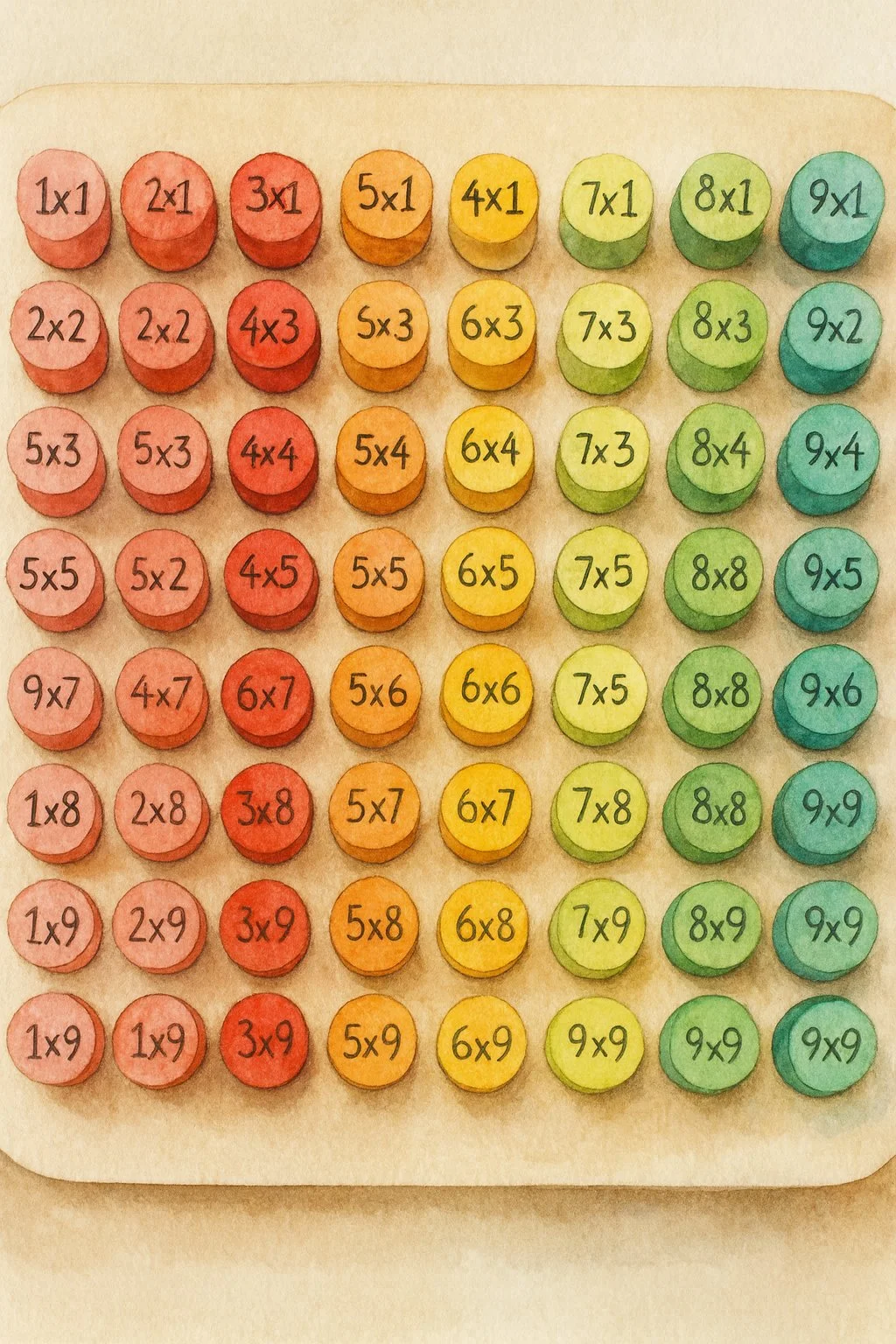
Opening Activities
What Are Opening Activities
Opening activities are short varied activities you may do to start your homeschooling day. You may include things like playing a board game, practicing a musical instrument, doing some mental math, or reading a picture book. These short engaging activities serve many purposes, but be clear what your purpose is or you can get lost in the opening activities and before you know it, hours have past and your whole school day was opening activities! Not that it's a bad thing! Sometimes we have spent our best hours deep in a game of Scrabble that should have been just a few turns before starting our main lesson. But instead of picking up our game the following day, we end up playing a riveting 2 hour game.
Opening Activities for Kinesthetic Learners
If you have kinesthetic learners, you may find that working with clay, wax or putty keeps them engaged longer as you deliver a lesson. Creative project driven students may become engrossed by origami or suncatchers. Competitive students may love board games or math puzzles, but if your students are younger than 9 years old, or not into competitive games, you may opt for cooperative games like those from Peaceable Kingdom, or you may modify games to make them cooperative.
Handwork is another fabulous opening activity if the project is already under way. Working for 10-15 minutes daily makes a big project manageable and reduces fatigue. If your student is too young for knitting, they may like a knitting tower or lucet. These tools are easier for little fingers that are still developing their find motor skills. Form drawing is often included in the main lesson, but some creative form drawing may be just right for an opening activity, but be mindful not to tire your students with such a mentally engaging activity. If you try form drawing, you may need to get thick stick crayons. One of my favorite winter activities is dipping candles. But dipping candles is a timely and often messy activity. Instead, try rolling beeswax candles! They only take a few minutes, but you need to make sure your wax is warm enough to roll or it will crack. A hair dryer is enough to soften the wax. Don't try the oven as I did! It will melt faster than you can close the oven door.
How to Use Picture Books Opening Activities
When children are young and easily engaged in imaginative or pretend play, very little is arguably better for their education, well being or development. But if you must pull them away from from such nourishing activities, choosing something equally engaging or intriguing might be the ticket. Transition activities suitable for small or large groups may differ from those especially suitable for small groups or individual students. Sometimes simply reading aloud is enough to draw students to you. Other times I realize that if I prepare an activity and the students see me preparing materials they are curious and if I begin the activity (either to make a sample or work out project details), they are drawn to what I'm doing. Very little needs to be said to invite them into the learning space, they are naturally curious.
If you are looking for ways to include those beautiful flash cards or conversation starter cards, opening activities might be the right place. I use these kinds of cards sparingly and usually with older students from middle school and high school. Our most used set is the Harry Potter conversation card set, but there are many to choose from. One year, my daughter and I did a mother daughter journal where we wrote in the same journal with daily question prompts. Then we could read each other's answers.
Shopping guide (non-affiliate links except Amazon)
Winter Is Coming Hardcover –by Tony Johnston (Author), Jim LaMarche (Illustrator)
History Through Stories: Teaching Primary History with Storytelling
The Waldorf Book of Poetry: Discover the Power of Imagination
The Accepted Whispers - Munajat-e-Maqbul By Mawlana Ashraf Ali Thanawi
How to Be a Moonflower Deck: 78 Ways to Let the Night Inspire You
How to Use Math, Music & Games in Opening Activities
Mental math, Mad Libs and pictures books are by far our most used opening activities. We do mental math daily, but that's not an activity that's going to to draw your students away from their engaging activities unless you have a student who loves math very much! But a math game might bring some into a learning space with interest and Mad Libs are not just great fun and humorous, but I think it's the best, funniest, and most creative way to learn your parts of speech. My go to favorite has always been picture books. The variety of topics is unmatched, the illustrations are gorgeous and the learning is deep. You can learn about people, history, science, politics, grieving and more.
How We Do Our Opening Activities
Sometimes our opening activities occur in the morning, but more often than not, they happen anytime throughout the day. And while I do wish we had more routine to our schedule, it is a good rhythm that has worked for us for several years now. We do aim to start at 8am, and we do aim to have lunch at 1pm, but after that, no two days are the same. Ideally, we'd start at 8am with some independent work or free play for the little ones, and move on to our main lesson at 9am. Ideally, we'd reserve the time after lunch for our handwork or hands-on projects and outings.
Today, I'm sharing what it looks like to do our opening activities for our main lesson. We are in the middle of our Middle Ages main lesson block and we are using the Professor Noggin's Medieval Times Card Game to get us started on today's lessons. We can't do this game often because we play all the cards and it takes about 30 minutes. I found for this unit, it worked especially well about midway through our unit so we could draw on information we'd already learned.
You'll probably notice I really get into playing games with my children. If you're the same, you'll probably like the same games we do, if you don't care for games, that's ok! There are plenty other opening activities you can do. Just find one that's right for you.
Check out the blog post for this video to see all the resources we've used for this unit as well as links to the products we've used.
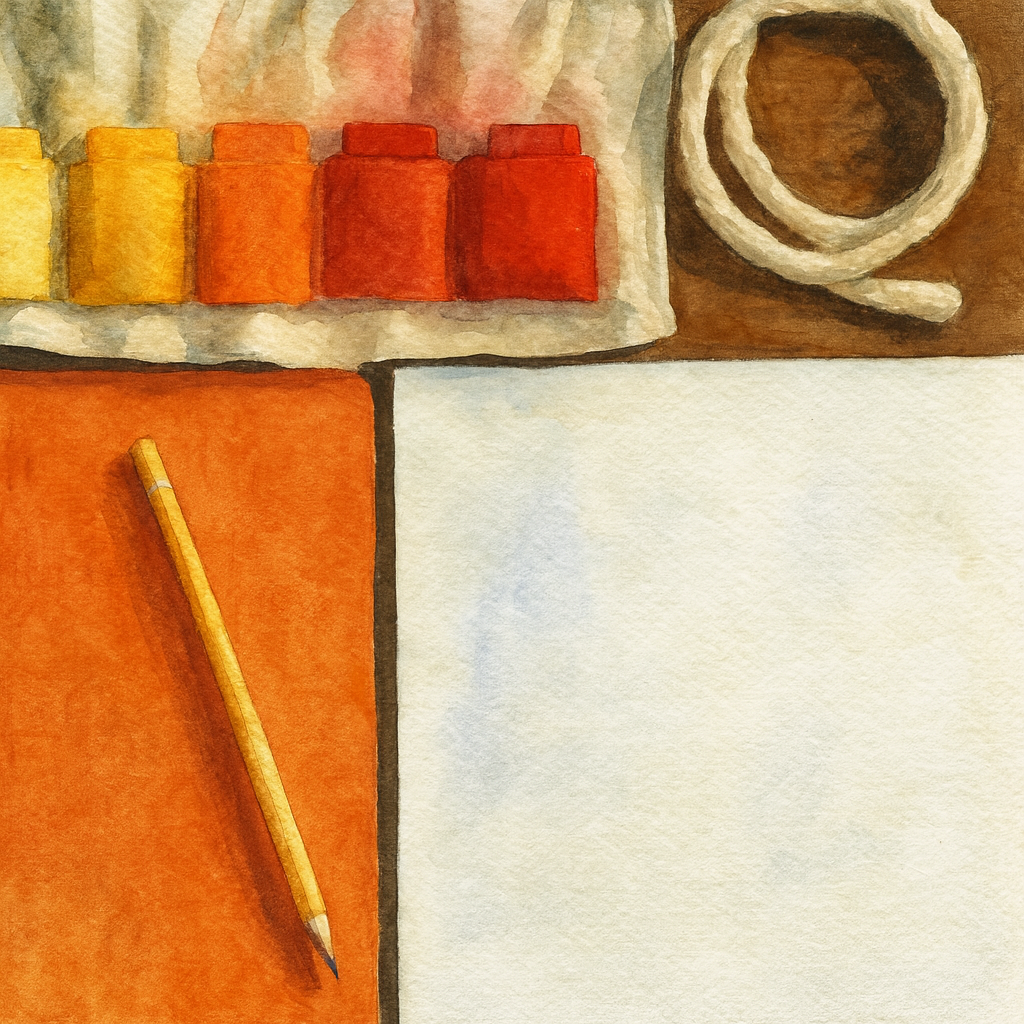
Daily Work
What is Daily Work?
Daily work is the independent work I assign to my students to work quietly and without needing assistance. I usually have my students work on this when I need time to prepare other lessons or work with another student. I start daily work packets or binders around age 9 or 10 years.
I usually start with a single page or language arts or math worksheets. I use old workbooks, hand me down workbooks or worksheets I find online to put together the students' daily work. Key to making this successful is that the work is 1-2 grade levels below their grade level so they may work independently. The purpose of daily work is to provide 'busy work' with a purpose. Sometimes we need our students occupied in quiet work. Daily work serves that need but also provides an opportunity for students to practice and eventually master math and language arts skills they previous learned. Mastery takes years, so if you've only just introduced and learned fractions in grade 4, you're likely going to need a few years to master everything about fractions. Daily work provides that opportunity to become proficient at skills the student has learned but doesn't know well. While the student is moving forward in new learning with lessons, she may practice those skill in their daily work.
Typically I only assign worksheets in language arts and math, but occasionally I add in other subjects. I begin by only assigning a single page of math and grammar which takes about 5-10 minutes, but as the students get older they are assigned up to 10 pages daily with work taking up to an hour by the time they are in high school.
Daily Math Binder
Creating a math binder is an easy way to take the best worksheets from a variety of workbooks. I take worksheets that are about 1-3 grade levels below with the intention that this daily math shouldn't take more than 10 minutes, should be easy, and cover basic math.
These worksheets contain five questions each day of the school week (Monday through Friday, or in the case of the worksheets marked Day 1 to Day 5 to accommodate international school weeks). That’s a total of 35 questions a week. That’s over 1000 questions a year, most of which are two part questions so that’s like doing nearly 2000 questions a year! That’s sufficient, but when I was doing these questions with my children, I often did 6-10 questions a day when my children were about grade 5 to grade 9, and about 2-5 questions when my children were grades 1-4. I would repeat the same questions year after year adding more challenging ones the first time my children went through these questions. By the time I had created all my mental math questions I had over 4000 questions spanning 3 years. I simply recycled the questions year to year.
If you would like to add mental math to your daily work, you can find prepared sheets here: Mental Math Grades 1-3 Mental Math Grades 3-5 Mental Math Grades 4-8
Mental math is the process of orally asking math questions and having the student compute the math in his or her head and orally answer the question. These are not questions that are drilled or memorized. Often you’ll find two part questions that can still be done mentally but are more challenging because now the whole question needs to be remembered while each portion of the question is worked out.
Questions are often two parts with the first part including a multiplication or division question followed by an addition or subtraction question. When questions include whole numbers and fractions the possibilities for questions is tremendous. Here are some examples:
2 x 5 + 9 = (19) 12 x 1/2 - 1 1/2 = (4 1/2) 12 ÷ 4 + 6 = (9) 7 x 7 + 18 = (67)
Mental math is ideal when it is included in your opening activities, but you may choose to do mental math whenever it fits your daily schedule. While it’s best to do mental math everyday, you may double up on mental math lessons when necessary. Or, you can do mental math 2 or 3 days a week. I find that mental math is best before a lesson and that it is math the student is already familiar with; it should not be new learning. In general, mental math is best when the student is fresh and isn’t already academically fatigued. For most children this is in the morning, but you may find your child performs best at another time of day.
Mental Math
Mental Math are math questions that can be worked out in one's head. Often, they are two part questions which involve a multiplication or division question first, followed by an addition or subtraction question next. When you add in fractions, decimals and percents, you can easily see how complex the questions can become.
One thing about math is that it is exact. 12 x 4 = 48. Always. It isn't maybe 47 or sometimes 49, it's simply 48. That's one thing I love about math. There's one right answer. Or is there? What you ever tried math the Waldorf way? Instead of asking what is 3 x 4? You can ask what makes 12? When you ask the second question, you can have an infinite number of answers! Each answer is exact and right, but now instead of just having one right answer, you have several right answers.
I've been doing mental math in our homeschool for many years, and over the years, I came up with thousands of questions. I would reuse the questions year to year rather than come up with new ones (starting in 5th grade), and for the younger grades (1st-3rd), I usually came up with about half the questions on the spot. Easy questions were mixed in with more challenging questions. Sometimes I would ask 4-6 questions and other times up to 10 questions a day for my older students. Recently, I took those questions and sorted them out into two categories: younger grades (1st-3rd) and older grades (4th-8th). I also standardized the number of questions each day: 4 questions for grades 1-3 and 6 questions for grades 4-8. For the younger grades, I have 2 36-week years worth of questions, that's nearly 1500 questions! And for the older grades, I have 3 -36 week years of questions with over 3000 questions total! One or the other curriculum is sure to suit your student, but if not, you can certainly come up with questions on your own. In addition to basic arithmetic questions, I also added in telling time, measurement and money problems as well as a few word problems. You can skip these or change them to suit your needs. I usually do mental math as part of our opening activities and usually earlier rather than later in our school day. Mental math is best when it's math the student has already learned and is proficient in. We are looking for mastery in basic arithmetic and mental math is a tool that can help you achieve that goal. If the mental math problems are ones your student has learned the math for, I suggest skipping them. On occasion, you may choose to use mental math as an opportunity to teach new math, but in general it's best to use mental math to review math facts.
Tips on How to use Mental Math Worksheets
I recognize that the mental math sheets may be too basic or too advanced for your child. Here are some tips on how to use it:
Too basic: That's okay, it's still working and gives your student some small wins.
Too advanced: Skip it! Don't worry if your child doesn't know this math, or doesn't know how to do multiple operations. Simplify the questions or skip them.
We haven't learned this yet: Take the opportunity to teach the math in a basic way, but minimally. We don't want to derail your goals. Or skip those problems.
Just right, but not enough: Double up on daily mental math. You can reuse these sheets year after year! While grades 1-3 have a total of 72 weeks worth of math, each day only has four questions.
When my children were young (1-3 grade), I only did 2-4 questions a day.
When my children were 5-8th grade, they were doing 6-10 questions a day.
Mental Math Curriculum
Mental math is the process of orally asking math questions and having the student compute the math in his or her head and orally answer the question. These are not questions that are drilled or memorized. Often you’ll find two part questions that can still be done mentally but are more challenging because now the whole question needs to be remembered while each portion of the question is worked out.
Questions are often two parts with the first part including a multiplication or division question followed by an addition or subtraction question. When questions include whole numbers and fractions the possibilities for questions is tremendous. Here are some examples:
2 x 5 + 9 = (19) 12 x 1/2 - 1 1/2 = (4 1/2) 12 ÷ 4 + 6 = (9) 7 x 7 + 18 = (67)
Perform these operations from left to right. The questions all follow the rules of Order of Operations (PEMDAS- parentheses, exponent, multiplication, division, addition and subtraction), with multiplication and division questions coming before addition and subtraction questions.
Mental math is ideal when it is included in your opening activities, but you may choose to do mental math whenever it fits your daily schedule. While it’s best to do mental math everyday, you may double up on mental math lessons when necessary. Or, you can do mental math 2 or 3 days a week. I find that mental math is best before a lesson and that it is math the student is already familiar with; it should not be new learning. In general, mental math is best when the student is fresh and isn’t already academically fatigued. For most children this is in the morning, but you may find your child performs best at another time of day.
These worksheets contain five questions each day of the school week (Monday through Friday, or in the case of the worksheets marked Day 1 to Day 5 to accommodate international school weeks). That’s a total of 35 questions a week. That’s over 1000 questions a year, most of which are two part questions so that’s like doing nearly 2000 questions a year! That’s sufficient, but when I was doing these questions with my children, I often did 6-10 questions a day when my children were about grade 5 to grade 9, and about 2-5 questions when my children were grades 1-4. I would repeat the same questions year after year adding more challenging ones the first time my children went through these questions. By the time I had created all my mental math questions I had over 4000 questions spanning 3 years. I simply recycled the questions year to year.
I’ve simplified and standardized the structure of these worksheets by having just five problems daily. But as there are two (36-week) years available, I suggest doubling up on questions if you feel five questions isn’t enough. If you do this, you can repeat the questions yearly. At first some questions may be too challenging, but later those same questions will become too easy! In fact, I’ve included very simple questions and repeat questions throughout on purpose. The balance between challenging and easy questions offers some ‘wins’ for the student and diminishes math fatigue.
How To Organize Daily Work
When our homeschool became stale recently, I needed to liven up our daily work with a new system. Actually, the system is not new, nor is it new to me. I’ve used it before…many, many years ago! These days, I’ve given the system an update (I didn’t talk about the old file folder system, only about our most recent binder system). And actually, I didn’t immediately realize that updating this old system was going to invigorate our stale homeschooling system. I actually put this file folder system together for my 9th grader who was struggling to keep up with his work now that he is in high school and doesn’t keep the same unit study/daily work schedule that we have been used to and still maintain. Honestly, this year has been ripe with challenges. Trying to maintain multiple learning schedules has proven difficult and something things needed to be changed. For one, our daily proficiency work needed an update. I felt this problem coming on slowly last year, but when we started school this year, I was one step behind and the gap only increased as the year progressed. This was because I wasn’t ready to start school, and would have really benefited from an extra week or two to get my ‘ducks in a row’. Needless to say, I wasn’t surprised when our system slowly crumbled under the weight of staleness and monotony, till it was running on fumes.
In came the file folder system. A system by which daily work is contained within file folders, neatly arranged and labeled for clarity and ease. I’ve modified this brilliant system (no doubt stolen from the workforce), to include a trimmed down envelope in the back to hold completed work.
This tutorial is quick and easy and you can find all the labels as a free downloadable PDF by clicking here. All you need to do is run it through your printer with the Avery label sheet 5160 available at most office supply stores.
Print your own labels using Avery 5160 labels for the following label documents:
Monday-Friday and School Labels
Do you use a file folder system? Let me know how it’s working for you!
Copywork and Dictation
Copywork and dictation is a means for children to gain writing proficiency. By copying full well constructed sentences, the student learns whole language rather than isolated rules of grammar and spelling. Attention is paid to the formation of the letters, neat handwriting, spacing between words and spelling. Once the well constructed sentence has been copied. The lesson is over until the following day. On the following day dictation is the lesson. The teacher recites the sentence from the previous day and the student writes it down. Immediately following this, the student corrects his or her own work by checking The previous days work. Immediately misspelled words are erased and corrected so that the dictation is well formed.
How We Do Copywork and Dictation
Each week a name of Allah will be focused for the duration of the week. On Day 1 of the week, the new sentence is presented and the student copies the sentence in the workbook. On Day 2 (the the previous lesson covered by a piece of paper), the teacher reads the sentence to the student who then writes the sentence into the workbook. Upon completion of the sentence, the student self corrects by checking the previous lesson. Mistakes are erased and corrected right away. Day 3 and Day 4 are repeats of the first two days and Day 5, the students writes the sentence from memory.
These lessons are short lasting 5 minutes in Level 1 to less than 15 minutes in Level 3. These lessons are designed to be semi-self guided, short and repetitive. The repetitive nature of this curriculum is purposeful. The goals for the week's worth of lessons can be multifold depending on which aspects you wish to focus on. Goals may include, handwriting, spelling, grammar and punctuation, memory work, memorization of the 99 Names, memorization of the ayat (or portions of the ayat) in Arabic, as well as listening and comprehension skills.
Levels get progressively more challenging, but the format remains the same. By Level 3, a student may choose to use a fountain pen for copywork and a pencil for dictation, but in Level 1 and 2, a pencil is recommended.
While this curriculum is geared towards the Muslim family, it is intended for everyone.
It can be used as a copywork and dictation curriculum to support multi-cultural studies, religious studies and lessons of diversity and inclusion.
Copywork and Dictation Curriculum
❤️❤️❤️❤️❤️❤️❤️
Level 1 (red level) includes:
•teacher’s manual (30 pages),
•36 weeks of content (5 lessons per week) (66 Pages),
•Wide Ruled pages (86 pages),
•Narrow Ruled pages (74 pages),
•Cursive Wide Ruled pages (86 pages),
•Cursive Narrow Ruled pages (74 pages),
•5 minutes lessons,
•One Qur'anic ayat in which the name of Allah has been mentioned,
•short sentences,
•repetitive sentences (included are ones that are the same but with added content the following week)
•large lines for writing
•suitable for grades 1st through 3rd
•Digital file so you can print as many copies as you need for all your children!
Get your Level 1 curriculum here:
https://www.pepperandpine.com/product/copywork-and-dictation-level-1/
🧡🧡🧡🧡🧡🧡🧡
Level 2 (orange level) includes
•teacher’s manual (33 pages),
•36 weeks of content (5 lessons per week) (64 pages),
•Wide Ruled pages (87 pages),
•Narrow Ruled pages (74 pages),
•Cursive Wide Ruled pages (87 pages),
•Cursive Narrow Ruled pages (74 pages),
•less than 10 minute per lessons,
•Two Qur'anic ayat in which the name of Allah has been mentioned,
•mix of short, medium and occasionally long sentences,
•medium lines for writing
•suitable for grades 2nd through 4th
•Digital file so you can print as many copies as you need for all your children!
Get your Level 2 curriculum here:
https://www.pepperandpine.com/product/copywork-and-dictation-level-2/
💚💚💚💚💚💚💚
Level 3 (green level) includes
•teacher’s manual (36 pages),
•36 weeks of content (5 lessons per week) (81 pages),
•Wide ruled pages (95 pages),
•Narrow ruled pages (86 pages),
•Cursive Wide ruled pages (95 pages),
•Cursive Narrow ruled pages (86 pages),
•mix of medium and long sentences, with occasional short sentences,
•Three Qur'anic ayat in which the name of Allah has been mentioned,
•small lines for writing
•opportunity to use fountain pen for this level,
•suitable for grades 3rd through 5th
•Digital file so you can print as many copies as you need for all your children!


